Affiliate links on Android Authority may earn us a commission. Learn more.
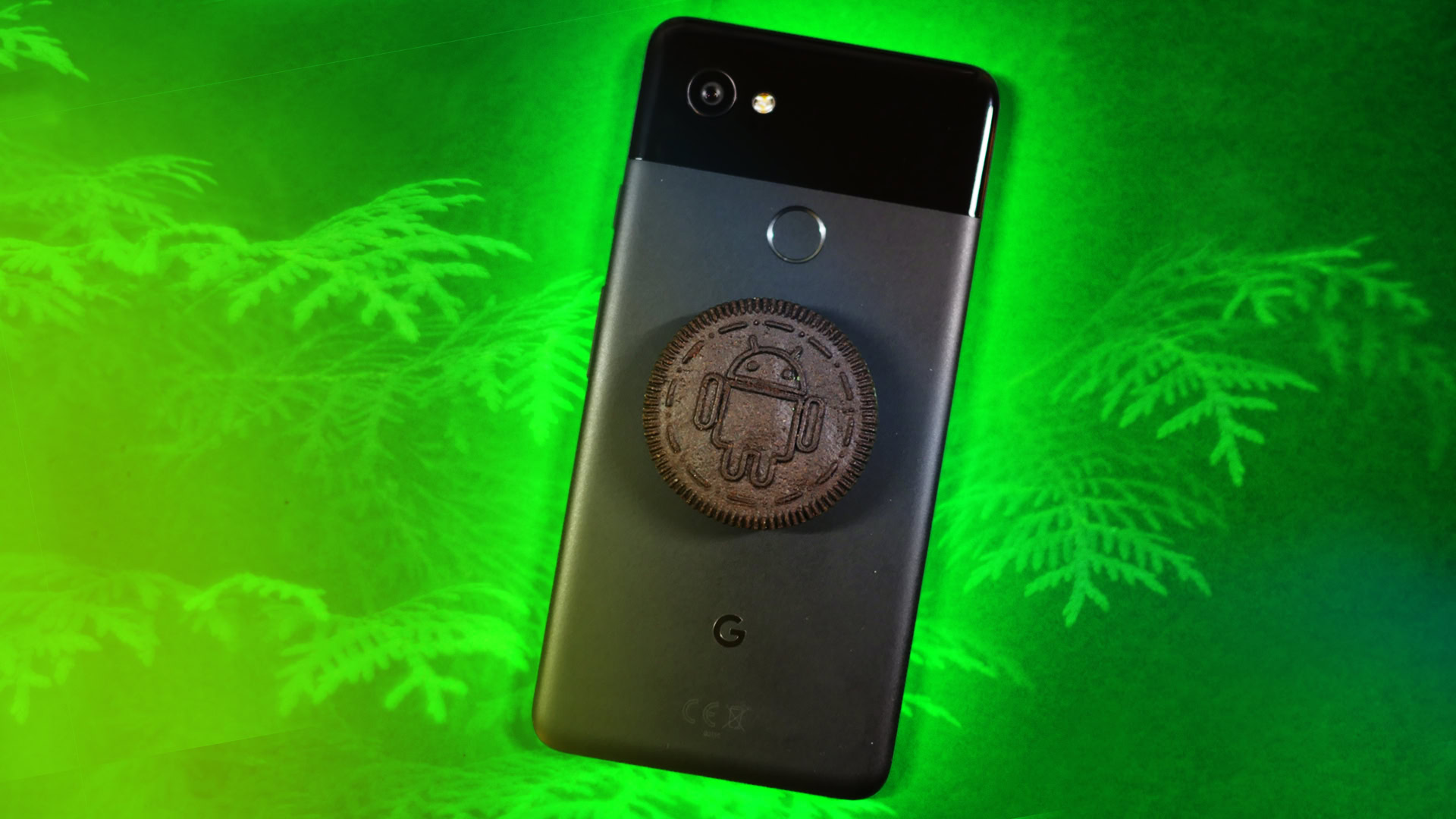
Google Pixel 2 and Pixel 2 XL
What we like
What we don't like
Our scores
Google Pixel 2 and Pixel 2 XL
In many respects, Google’s first-generation Pixel phones were a really good first try at appealing to the masses. They were simple, fast, and had wonderful cameras. If you could get past the somewhat uninspired design, they were some of the best Android phones released in 2016.
Read Next: Samsung Galaxy S9 Plus vs Google Pixel 2 XL: Camera comparison
Now Google is back with a follow-up pair of phones, and it definitely spent more time on these. They’re faster, they look unique, and they have Google’s AI built in to help make sure your phone is always one step ahead of you. This is how Google thinks phones should work.
This is our Google Pixel 2 and Pixel 2 XL review.
Both devices used in this review were provided to Android Authority by Google.
Pixel 2 & 2 XL problems, warranty, and update (added Nov 2017)
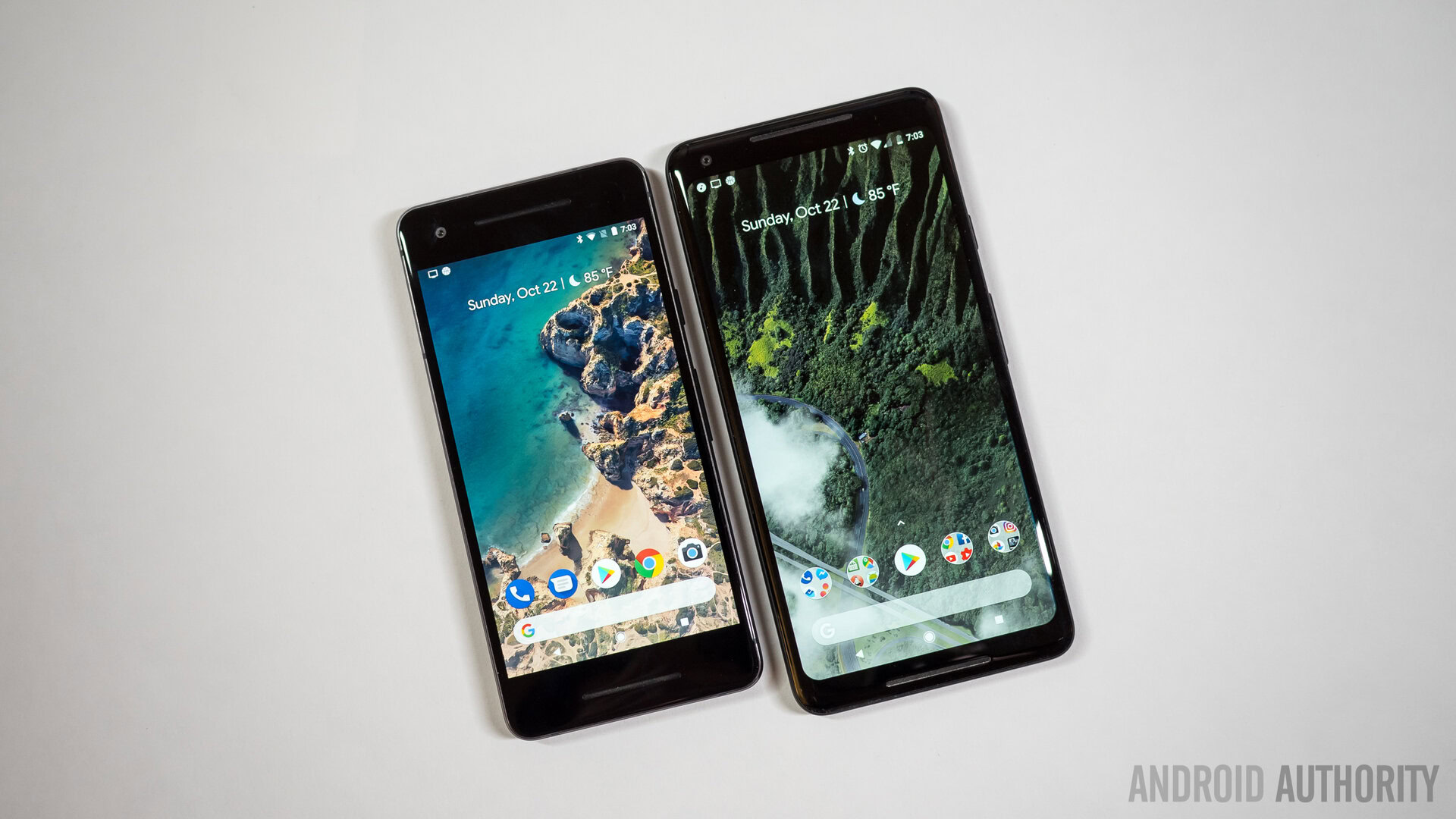
A month after the initial release of our Google Pixel 2 review (October 2017), more and more problems regarding the Google Pixel 2 and Google Pixel 2 XL came to light. Before reading the rest of the review, you might want to read through this section. Here we go over some of the biggest problems reportedly affecting the Pixel 2 family, as well as recent changes Google has made to help address some of these problems.
Since the Google Pixel 2 and Pixel 2 XL started shipping to its first customers in late October, many of them have reported issues with the phones. Some of the biggest complaints have centered on the display for the larger Pixel 2 XL, with many owners claiming online that they have encountered issues with muted or undersaturated colors. Others have reported seeing a blue tint on the Pixel 2 XL screen.
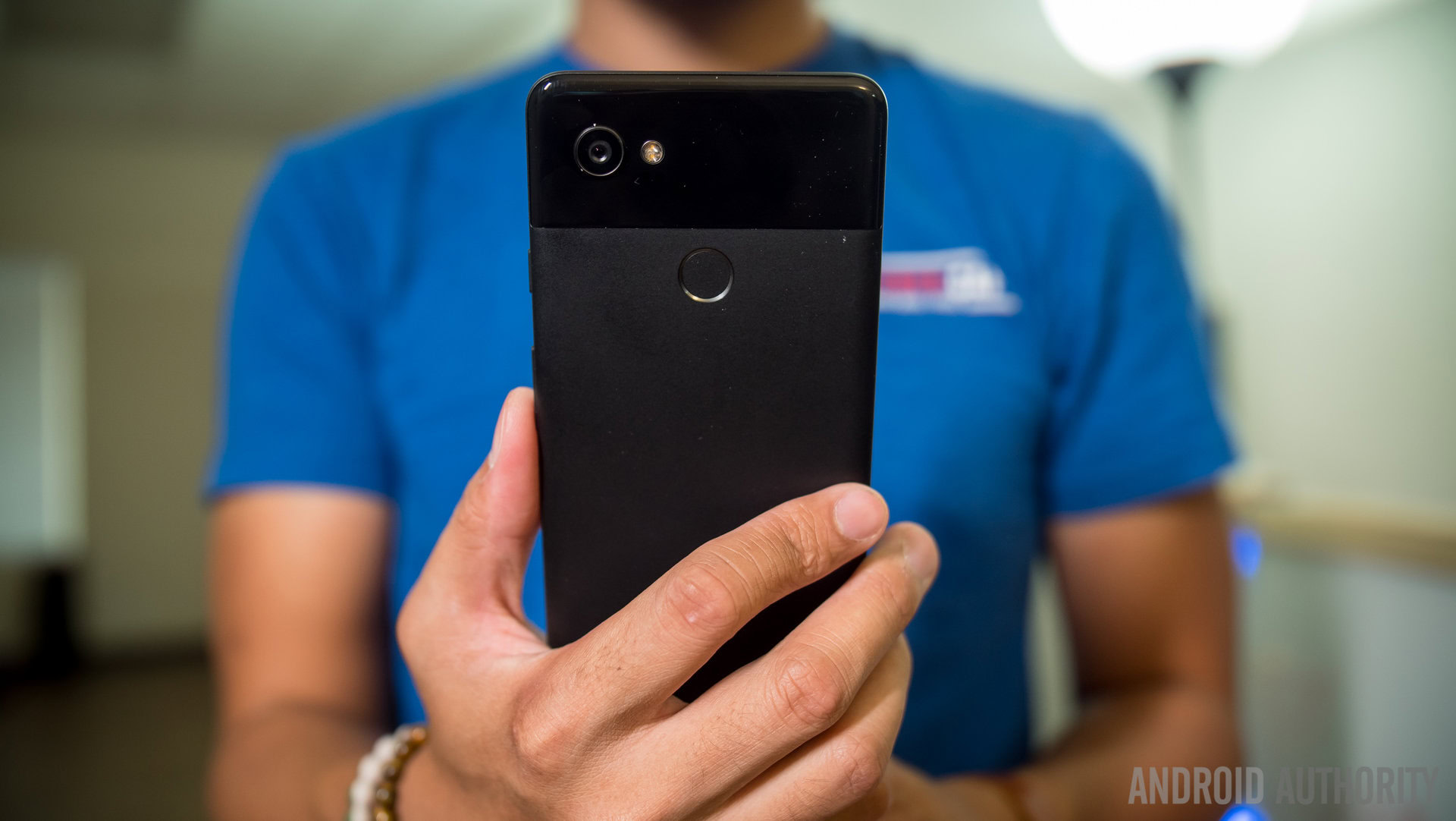
In response to the muted/understated color complaints, Google stated that it has “added an option to boost colors by 10% for a more saturated display.” In an update for the phone that rolled out in early November, Google said it added new options for both the Pixel 2 and Pixel 2 XL that added a “saturated” color mode in its display settings, which users can toggle to make the screen appear more vibrant. Google says that the blue tint “issue” is in fact normal for the phones.
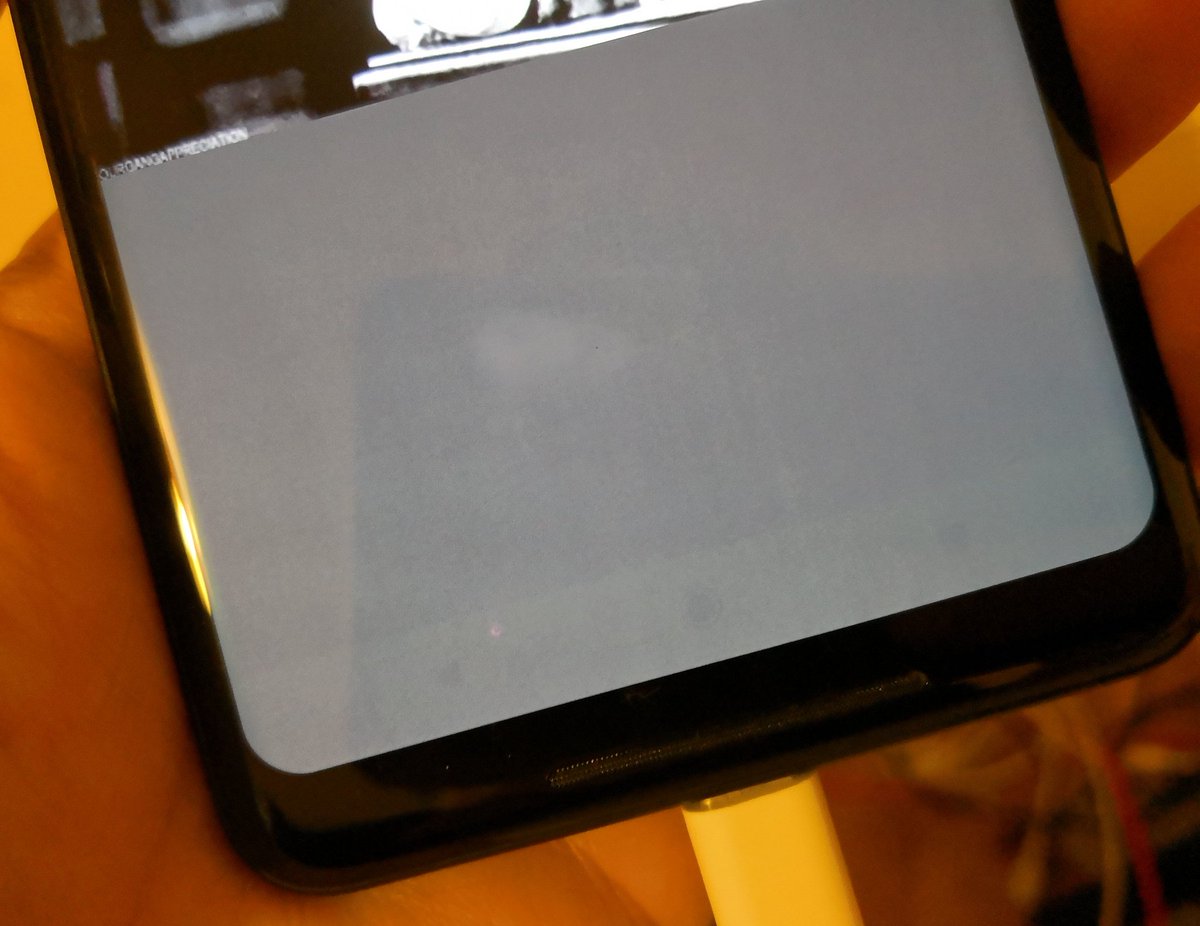
Perhaps a more serious issue that’s been reported with the Pixel 2 XL is that its pOLED screen suffers from burn-in issues; namely that the phone’s navigation bar across the bottom of the screen can burn into the display with as little as one week of use. Google has since rolled out an update that will let the on-screen the navigation buttons fade out, while also “updating” the maximum screen brightness. However, at least one law firm is considering launching a class action lawsuit against Google on the Pixel 2 XL screen issues.
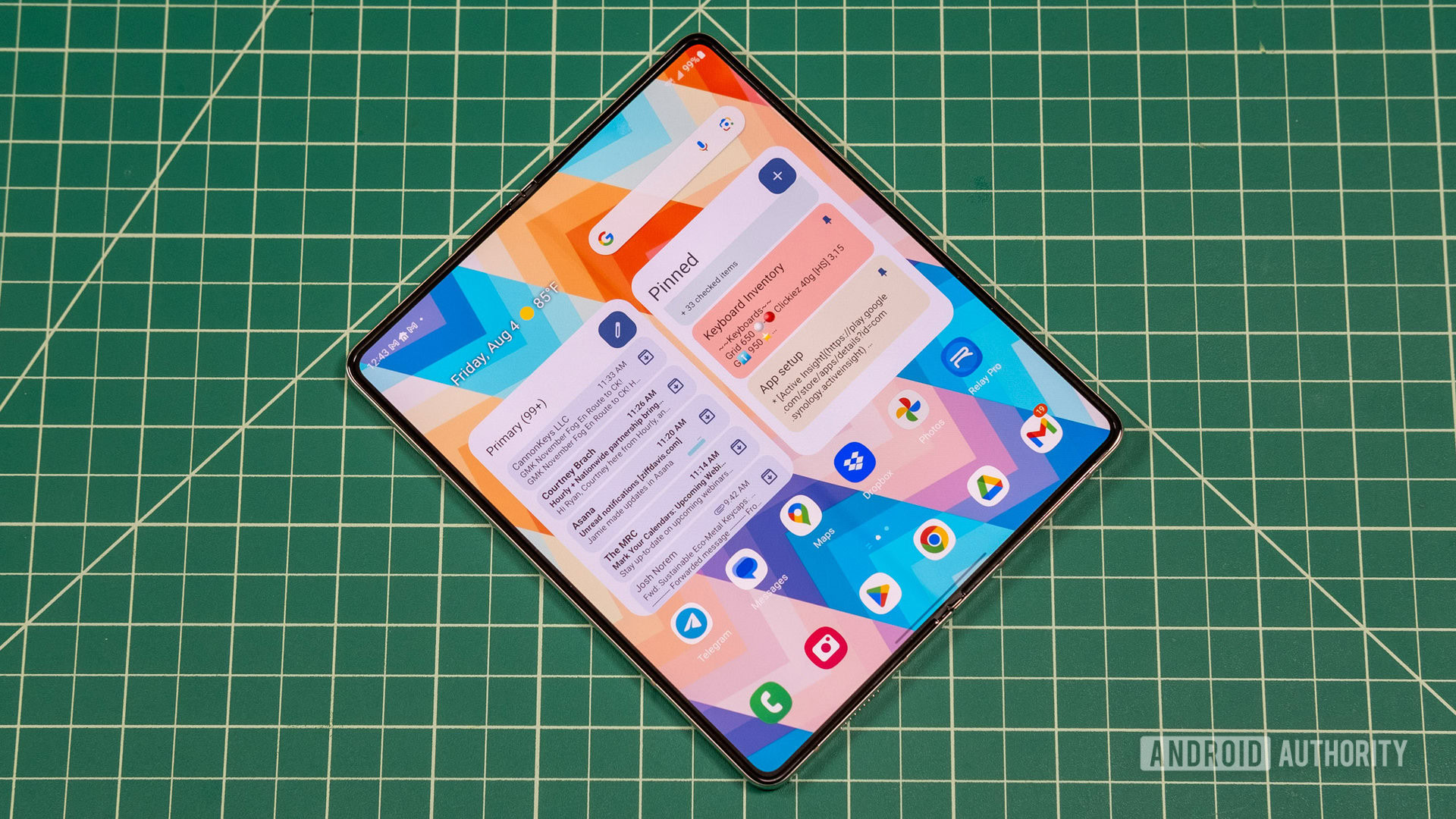
Some Pixel 2 owners also reported hearing high-pitched and clicking noises from the phone when it’s next to a person’s ear. Turning off the phone’s NFC fuctions served as a workaround for that problem, at least for some owners, and Google’s early November software update apparently fixed this issue for others. Other Pixel 2 owners have reported that the phone’s microphone stops working during calls. However, the fix for this issue is pretty simple; just blow on the microphone.
Finally, the most recent (as of this writing) problem deals with the Pixel 2 XL again, as some users have reported that the screen will occasionally flash when the display is turned on or off, or if it switches automatically. So far, there’s no word on if an update will be released for this issue, although some people think this “bug” is actually sort of cool.
Because of all of these problems with the new Pixel 2 phones, Google has revealed that will offer a free two year warranty worldwide for both devices. This means that people who get the Pixel 2 models in the US will get one extra year under the normal warranty; other markets where the phone is sold already have two years worth of warranty. The premium Preferred Care plan with the Pixel 2 or 2 XL is currently unchanged. Preferred Care subscribers pay $129 to get their phones replaced in case of accidental damage or device breakdown; that plan lasts for two years as well.
Design
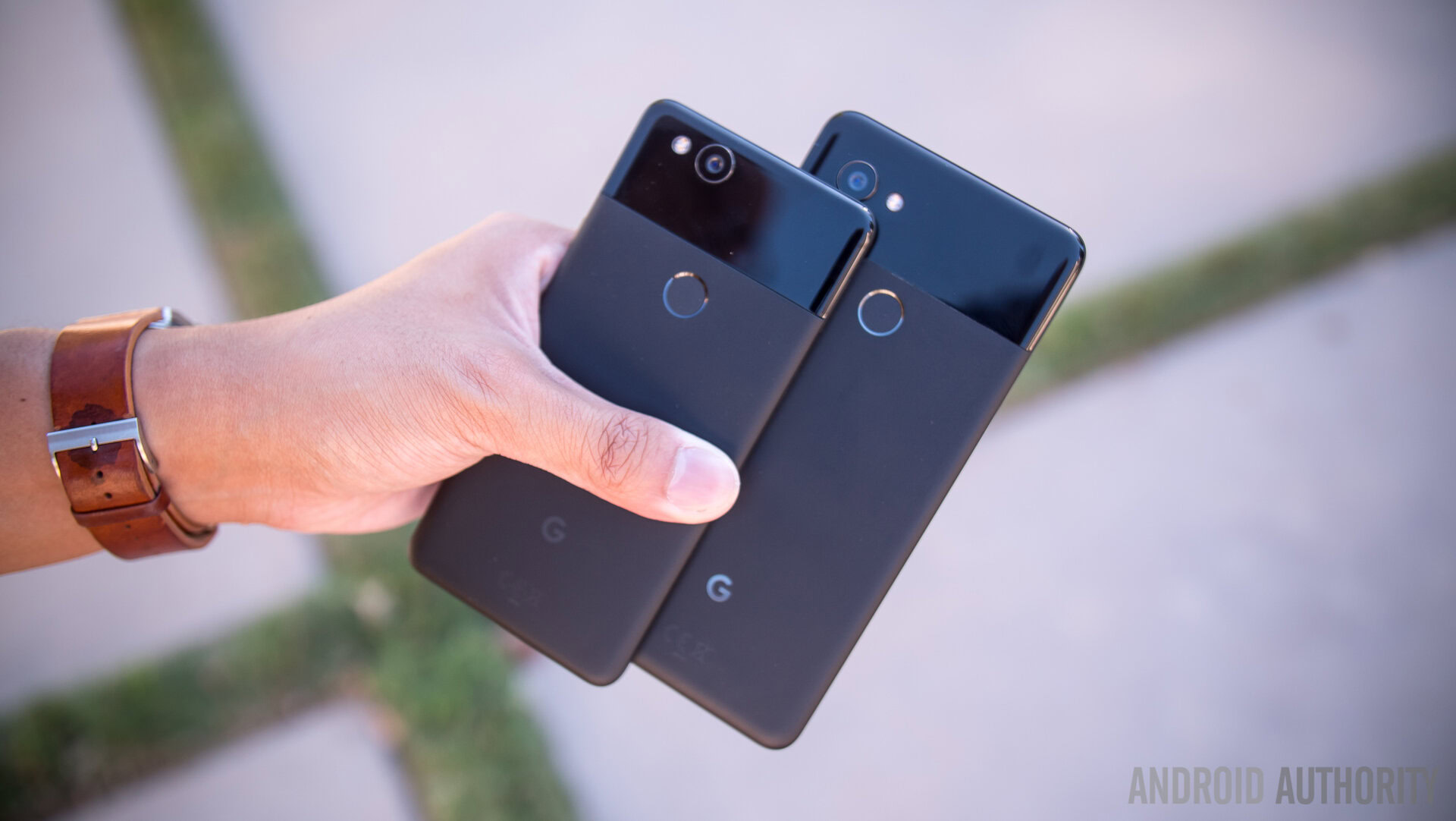
Google has taken the generic design of the 2016 Pixels and refined it.
Google has taken the generic design of the 2016 Pixels and refined it.
Both Pixels feature an aluminum unibody design, but Google says it’s covered them in a “hybrid coating”. Some will complain it makes the phones feel more plasticky, but I find it to be a real treat to hold. It does make the phones feel more plasticky than other aluminum phones, but definitely not in a bad way.
It’s amazing how long a little bit of texture goes with these phones. Comparing the Pixel XL and the Pixel 2 XL, the sizes aren’t too different, but the material on the back of the newer phone makes all the difference in terms of handling.
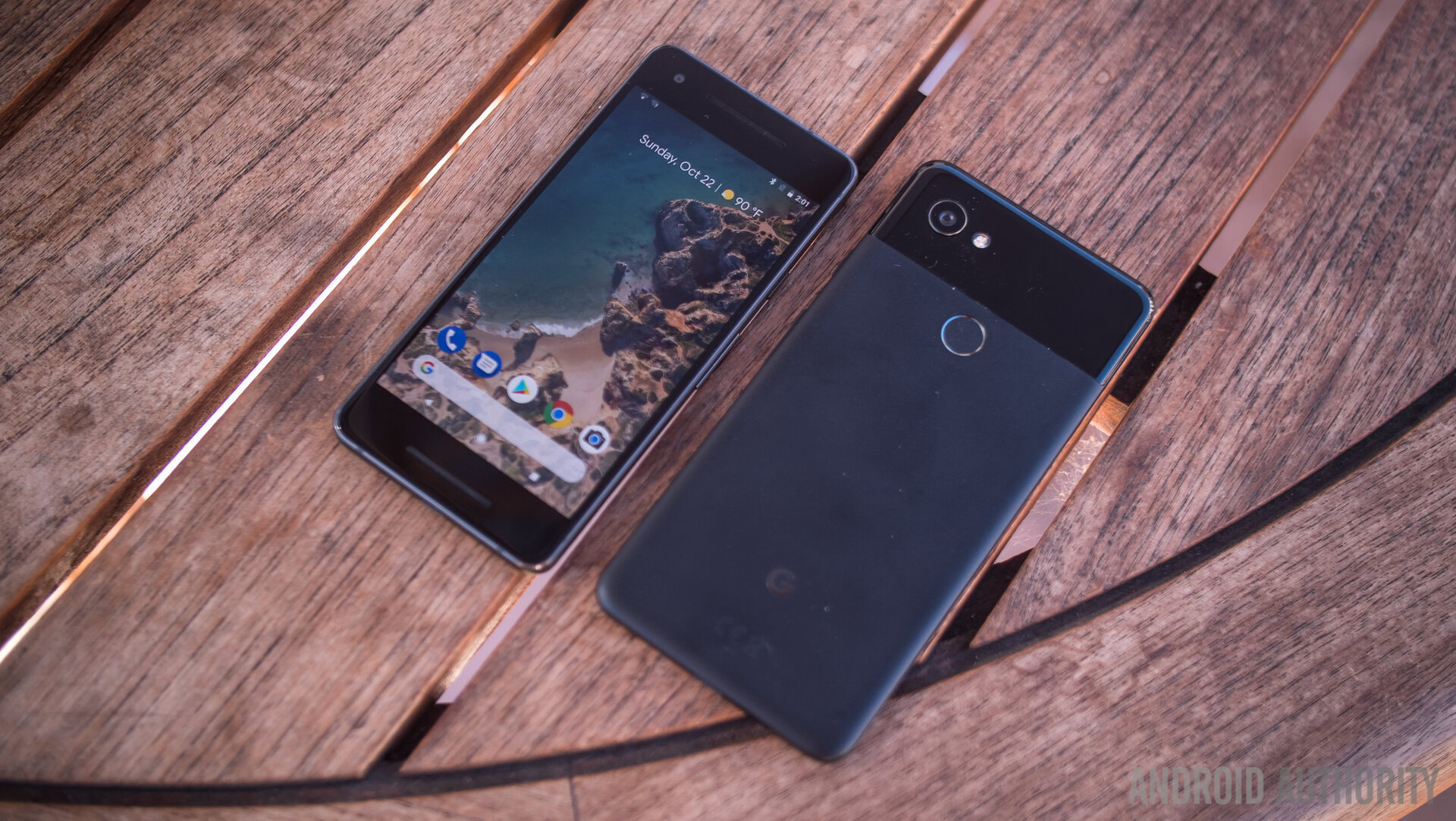
From the back, they’re nearly identical. The camera sensors are in different places, but, though they stick out ever so slightly, it’s not all that noticeable.
Don’t miss: Google Pixel 2 XL unboxing and first impressions
Surrounding that camera sensor is a glass visor— basically the Pixel’s trademark at this point. I’m not sure why, but I like the visor on the Pixel 2 much more than on the original Pixels. Maybe I didn’t find the fingerprint-sensor-surrounded-in-glass look all that appealing.
Speaking of fingerprint sensors, Google has included a really fast one on the back of the Pixel 2s, and it sits right where your index finger lands when you’re holding it. This is my—and almost 50% of our readers’— preferred placement for the fingerprint sensor, and for good reason. It allows you to unlock the phone without smudging the camera, and it makes the front of the phone look cleaner.
I like the design of the Pixel 2 on the back, but the front is a different story.
Overall, I like the design of the Pixel 2 on the back, but the front is a different story. The smaller Pixel 2 doesn’t look anything like a 2017 flagship from the front. It’s got big bezels on the top and bottom of the screen. Google included a pair of very loud front-facing stereo speakers on each device, which fill up all that room. They’re the same size on both phones, which explains why the bezels on the Pixel 2 XL are so much smaller.
The bezels also serve another purpose. You can grab onto those babies while playing games and never worry about dropping it.
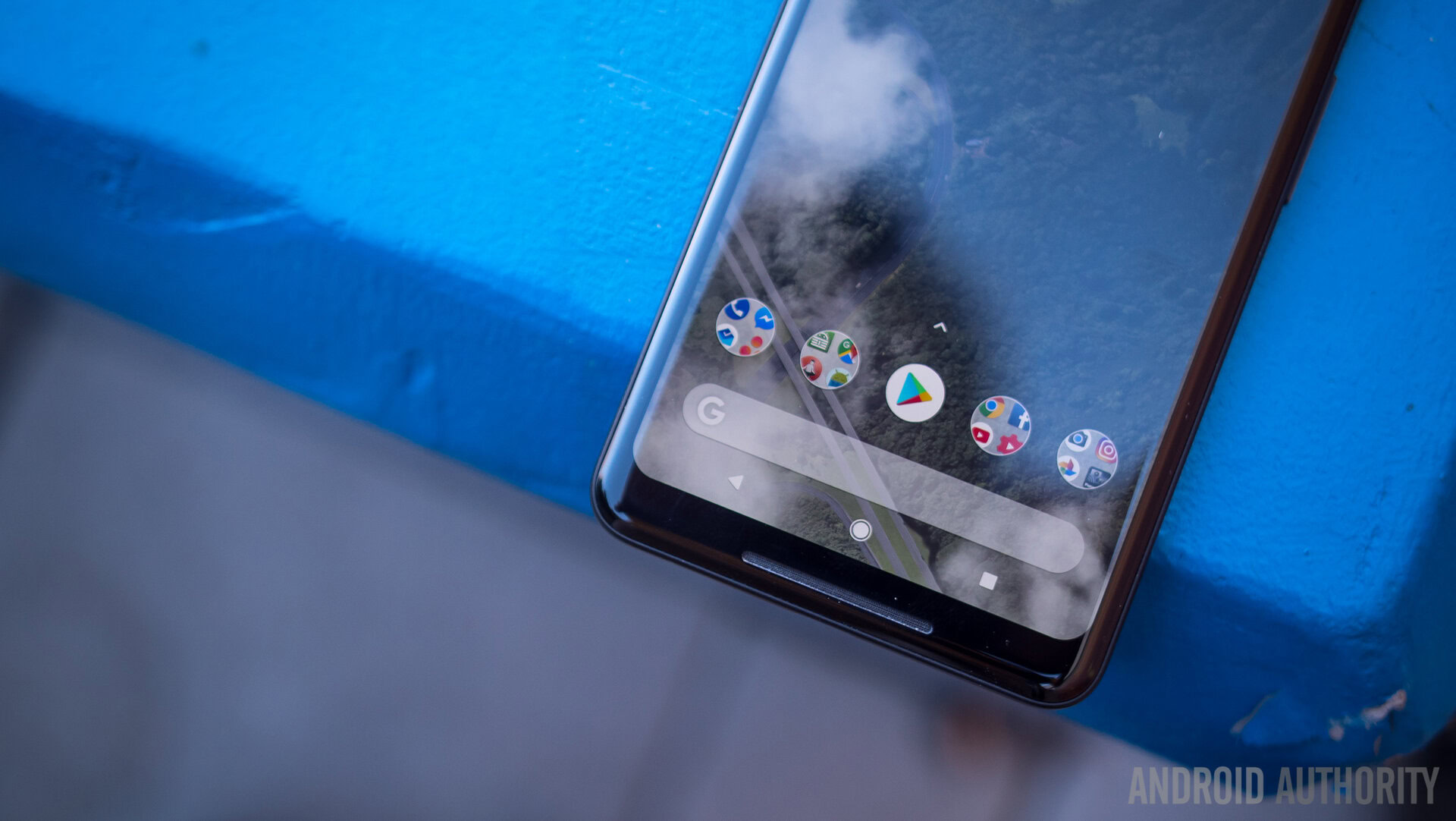
Reasons notwithstanding, Google’s decision to make the Pixel 2 and Pixel 2 XL look so different on the front is still perplexing. The Pixel 2 looks like a small Nexus 6P, and the 2 XL (sort of) resembles the LG V30.
Like the 6P, the Pixel 2 is basically symmetrical, but the Pixel 2 XL isn’t. There is a little bit more to the forehead than the chin, which probably won’t bother most people. It was something we couldn’t unsee, though.
Both devices also (finally) have IP67 ratings for dust and water resistance, which means they can withstand submersion in 1.5 meters of water for up to 30 minutes. Last year’s Pixels stood out from the flagship competition due to their lack of water resistance. We’re happy to see Google go the extra mile this time around.
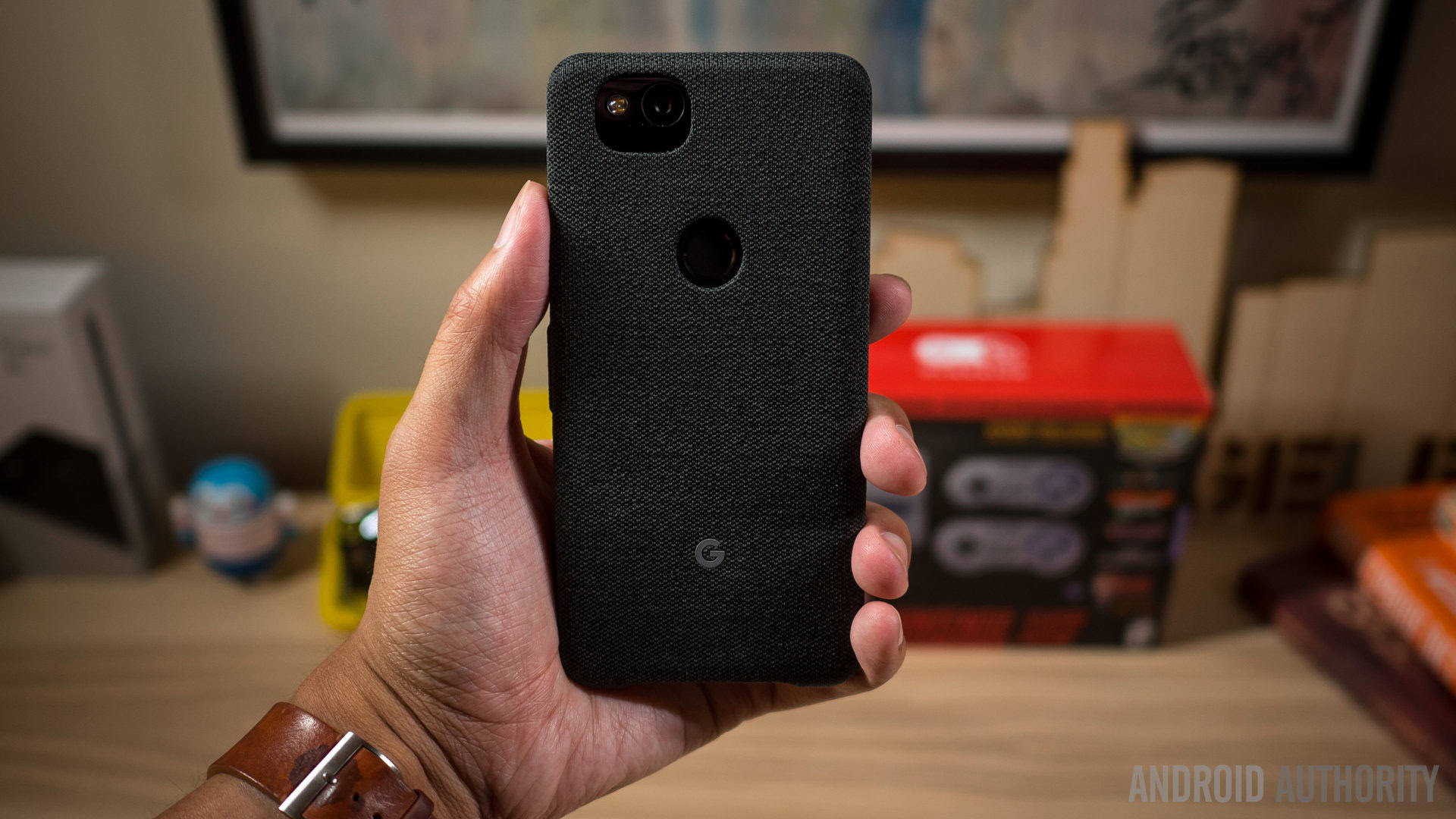
Oh, and if you’re looking to protect your new investment, Google has made some hot cases for these Pixels. The fabric cases are pricey at $40, but both Josh and I think they’re totally worth it. They add bulk, but they make an already grippy phone even grippier, and look good doing it. Google has done a great job of making fabric one of the best materials we’ve seen and held on a device or, in this instance, a case.
Display
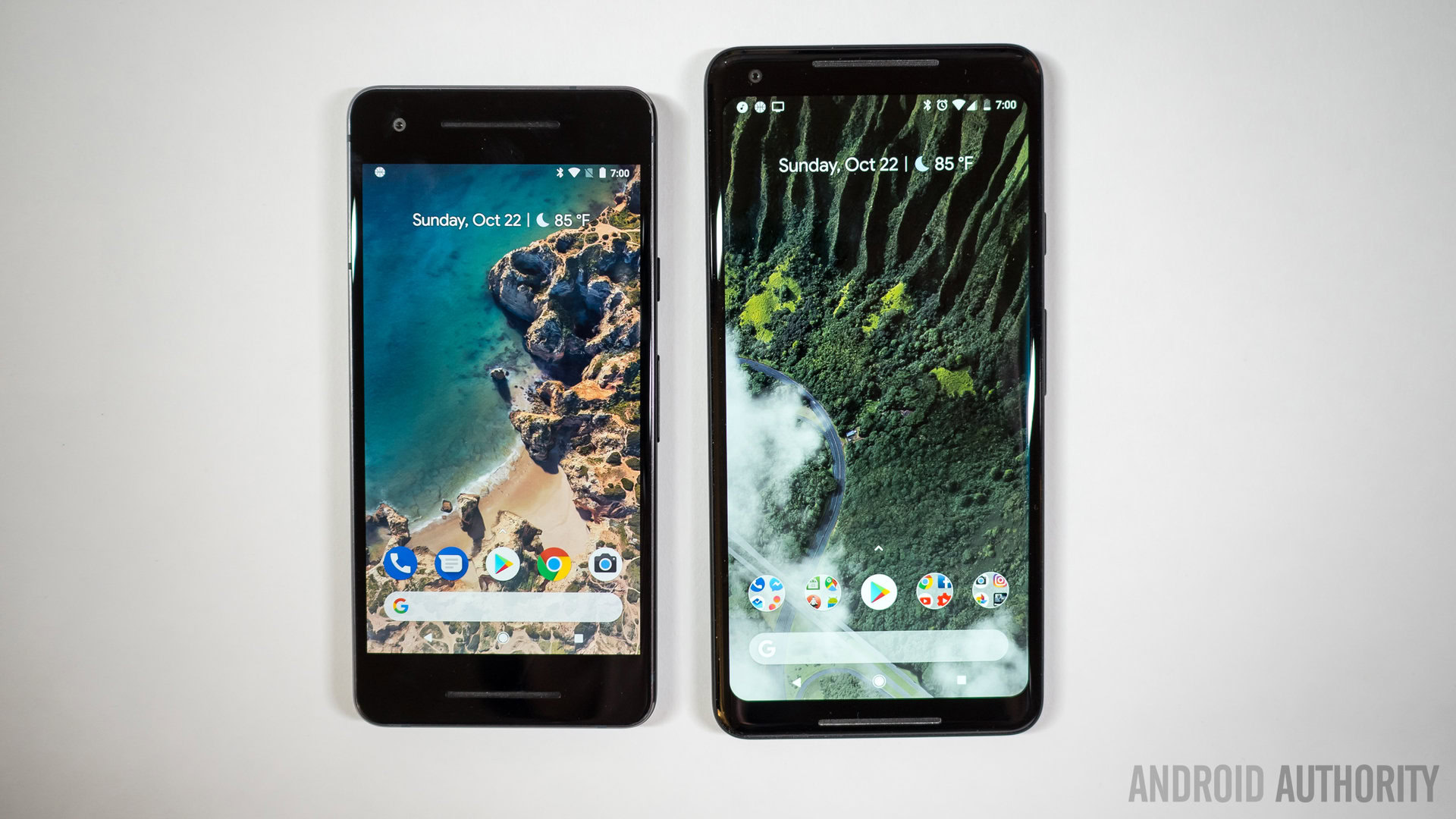
As mentioned, these phones come with very different displays. The Pixel 2 sports a 5.0-inch 1080p OLED display with a respectable pixel density of 441 ppi. It has a traditional 16:9 aspect ratio— Google calls it “Cinematic”— which isn’t as eye catching as the Pixel 2 XL’s 18:9 display. Even so, if you’re in the market for a small phone, this one is more than manageable with one hand. The Pixel 2 XL features an LG-made 6.0-inch Quad HD+ pOLED display with a pixel density of 538 ppi. It also has an 18:9 aspect ratio with rounded corners, making the device much easier to manage in hand than last year’s Pixel XL.
As far as quality is concerned, the Pixel 2’s display, although “only” 1080p, is incredibly bright, crisp, and a joy to stare at day in and day out. It’s also easy to see in direct sunlight.
The Pixel 2’s display is a joy to stare at day in and day out.
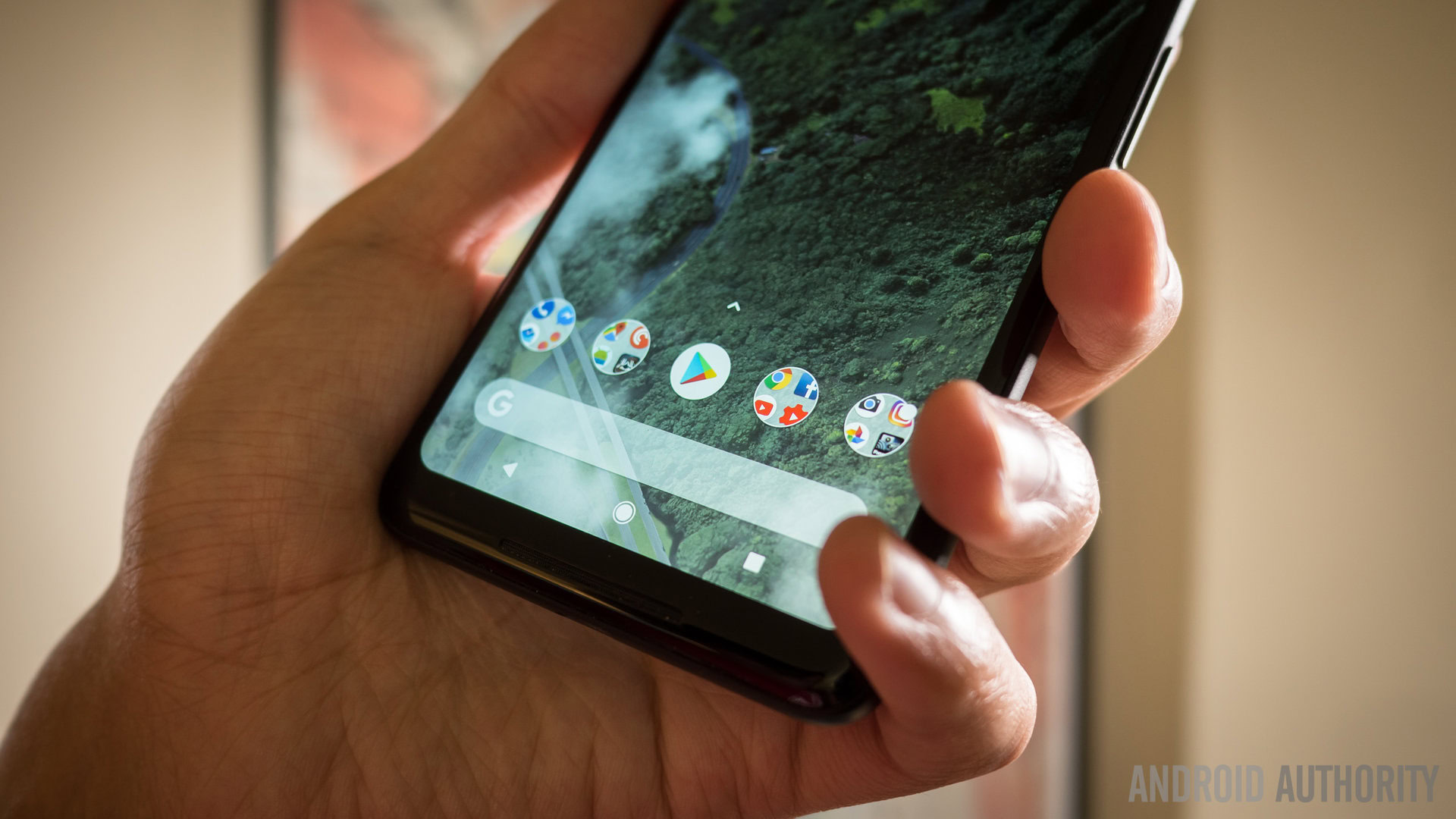
The Pixel 2 XL’s display is a different story, however, as you may have guessed. Reports from all over have claimed that the Pixel 2 XL’s display suffers from muted and undersaturated colors, grainy images when scrolling down web pages, and a blue tint that appears when the phone is tilted to even a moderate angle. In day-to-day use these display issues are barely noticeable, and even when we did see them, it wasn’t all that distracting.
Also read: Why I’m put off by the Pixel 2 XL’s display, but you might not be
Google is aware that some users aren’t exactly happy about this, and said if it gets enough feedback, it may add in some more color options to the display settings. Unfortunately, that might not do much. While the saturation can be changed in terms of rendering, the weird viewing angle problems seem to be related to hardware rather than software, making it tougher to fix with a simple update.
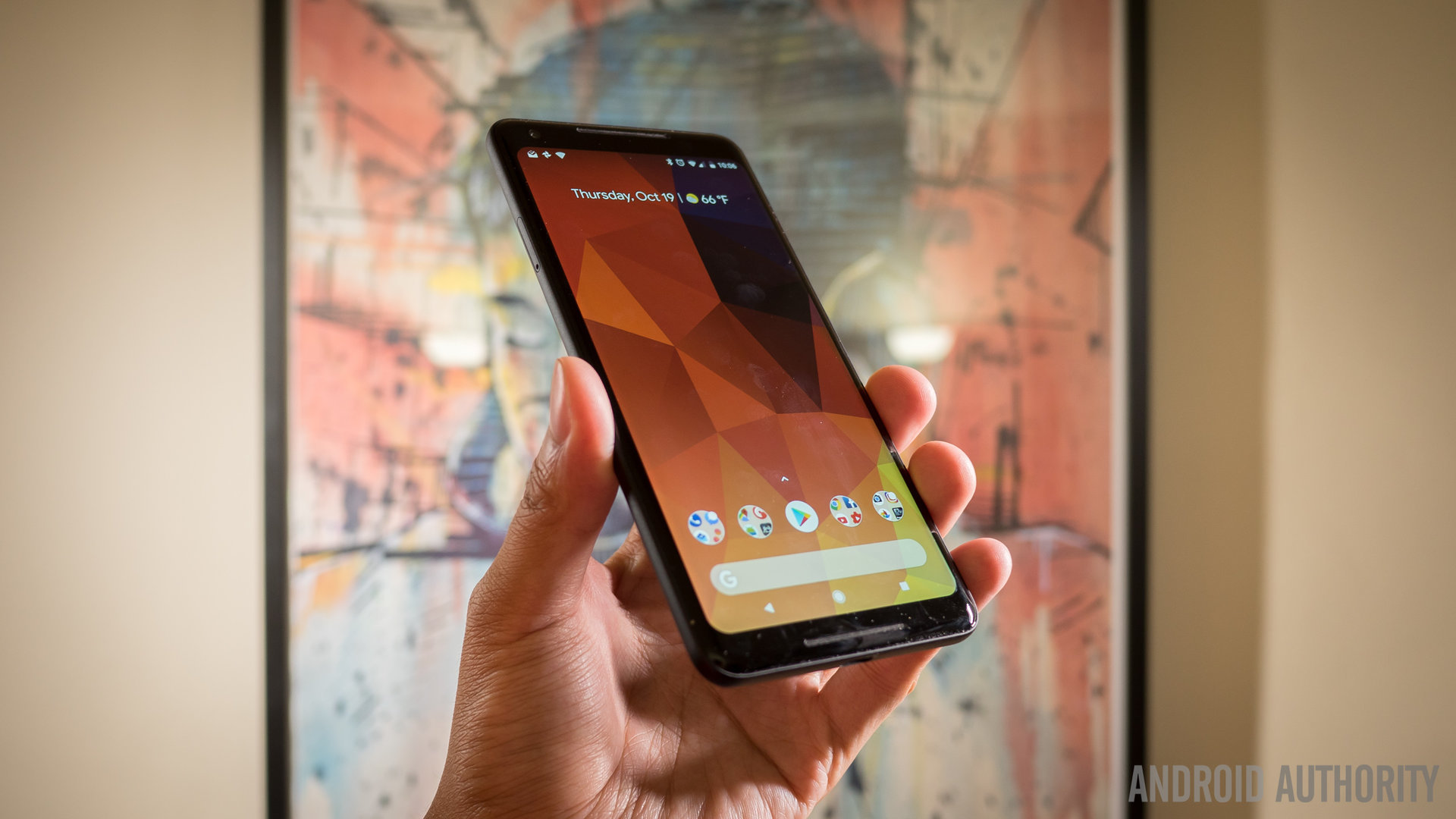
In our own display tests, the Pixel 2’s OLED display scored a color temperature of 6969 Kelvin, with the Pixel 2 XL achieving an even cooler score of 7035 Kelvin. This means both displays have a slight blue tint, though they’re warmer than last year’s Pixel XL.
We then tested both displays in standard mode (as opposed to adaptive mode), and the screens dropped down to 6841 and 6891 Kelvin, respectively, which is much closer to the recommended temperature of 6500 Kelvin for color accuracy. Especially compared to the Pixel XL, Google is tuning the Pixel 2 and 2 XL’s displays to produce more accurate colors.
The Pixel 2’s display can also achieve a brightness of 440 nits, while the Pixel 2 XL’s display can go up to 483 nits. Both displays are brighter than the Pixel XL’s. However, last year’s flagship was able to achieve a low brightness of just 2 nits, while the Pixel 2 and 2 XL can only go down to 7 and 5 nits, respectively.
So you won’t have as nice of a time reading on your Pixel 2 in bed as you would with, say, the Galaxy Note 8. What does that mean in the real world? I haven’t had any problems with the minimum display brightness on the Pixel 2, and I don’t think you will either.
Performance
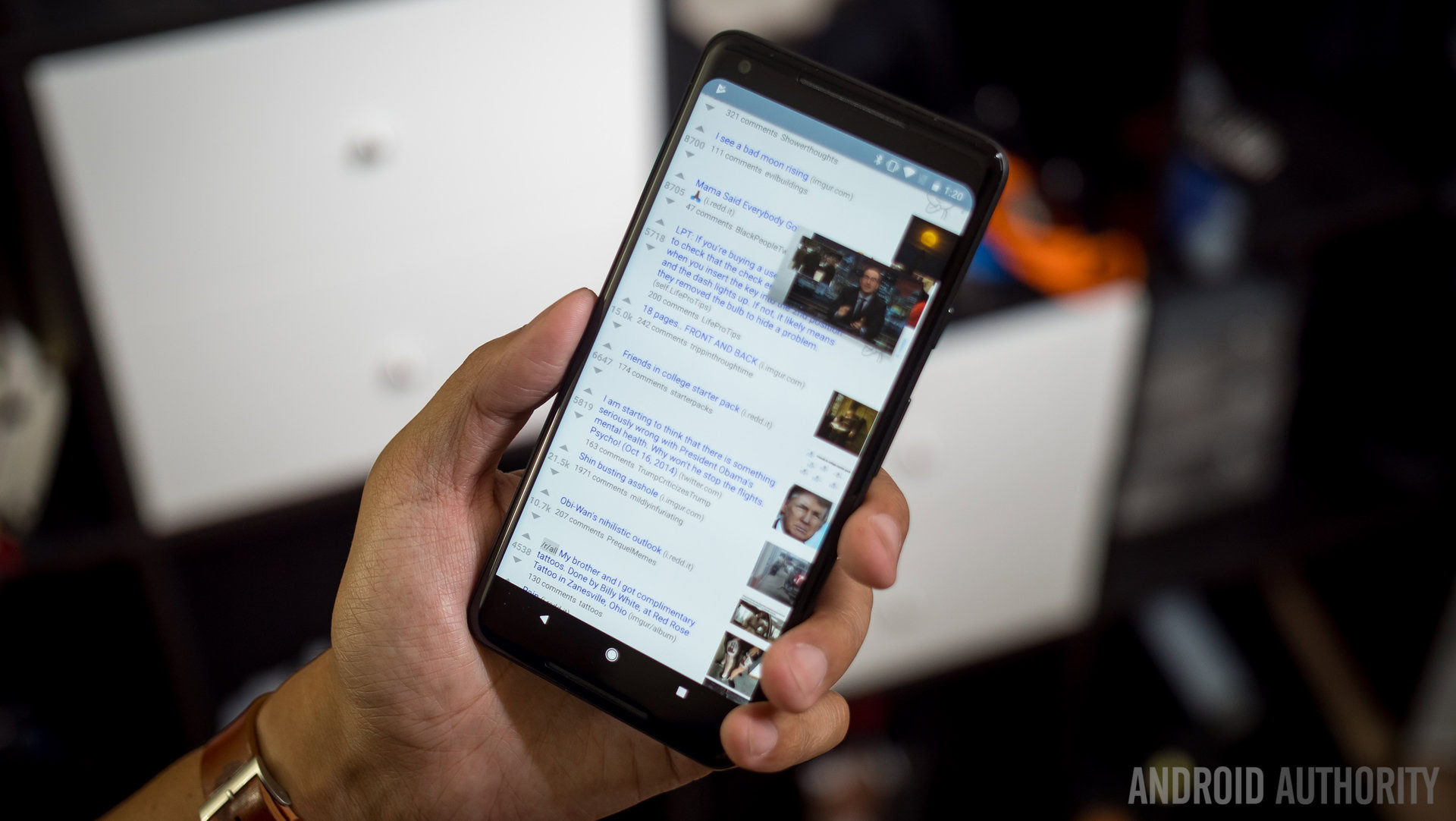
The Pixel phones excel in a few key areas, and performance is one of them. Both devices are powered by Qualcomm’s Snapdragon 835 Mobile Platform with the Adreno 540 GPU and 4 GB of LPDDR4x RAM. No, they’re not the first devices to run the Snapdragon 836 like we once believed, but the 835 and 4 GB of RAM is more than enough to keep these phones flying.
Scrolling through the user interface, multitasking, switching between apps, and playing games are all incredibly smooth on both devices. I experienced zero stuttering throughout my time with the Pixel 2. It was surprising how cool the phone stayed, even when playing graphic-intensive games.
Performance is top notch on both handsets.
Multitasking is its own joy, thanks to the updates found in Android Oreo. Picture-in-picture mode is a ton of fun and doesn’t bog down the system one bit. YouTube, for instance, defaults to PiP when the home button is pressed, minimizing a small version of the video to the bottom right corner or any place that you might drag it. This is the same with Google Maps, too. In either case, we did not see any decrease in overall performance.
Hardware
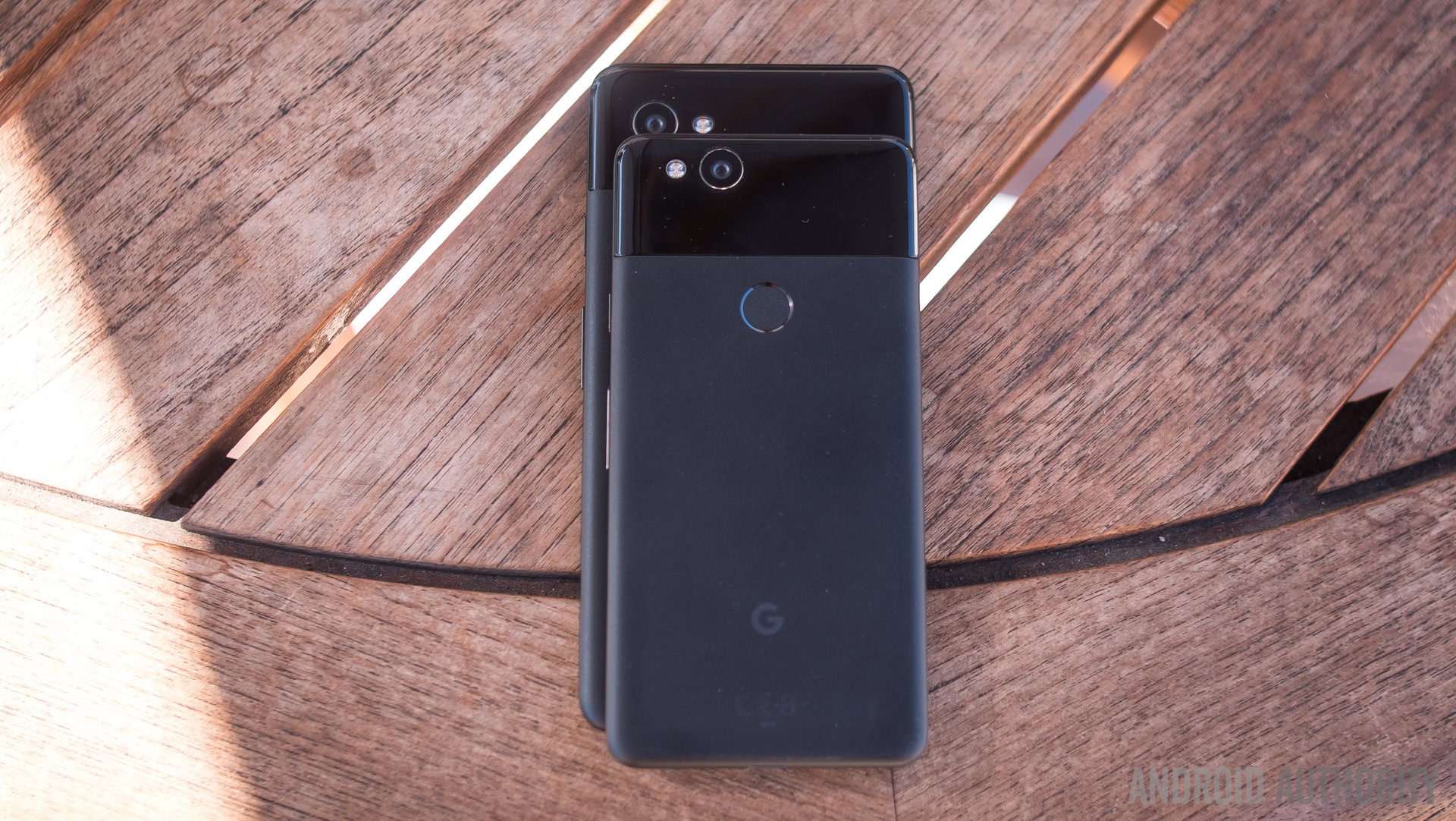
Pixel and Nexus phones of years past have never included expandable storage, and they still don’t. However, Google bumped the base storage amount up from 32 to 64 GB, and there’s also a 128 GB model if that’s not enough.
Storage shouldn’t be an issue for many users though, as both the Pixel 2 and Pixel 2 XL are able to upload unlimited “original quality” photos and videos until the year 2020. That means photo and video storage space is pretty much a non-issue for these phones, which is a huge bonus.
What isn’t a huge bonus is the lack of 3.5 mm headphone jack on these devices. Google finally built up enough courage to remove that nasty port that no one ever used anyway. Coincidentally, it’s at the same time as the launch of a pair of smart Bluetooth earbuds. We’ve talked about the headphone jack vs no headphone jack debate here at Android Authority to the point of exhaustion, so I’ll keep this pretty short. Removing the headphone jack is inconvenient for users right now (myself included). I can’t help but think it’s nothing more than a cash grab to sell more Bluetooth headphones.
What makes matters worse is that Google doesn’t include a pair of earbuds in the box, something pretty much every other OEM is doing nowadays.
A headphone jack adapter is included in the box. It’s probably best to just keep it attached to your favorite pair of cans or earbuds so that they’re constantly at the ready. Or in Josh’s case, have a couple of truly wireless Bluetooth headphones handy and constantly charging.
When it comes to external audio, Google included front-firing speakers on both devices. Hallelujah! They get loud without sacrificing audio quality and are pretty difficult to cover up when you’re playing games or watching videos. From here on out, I’d rather OEMs include front-facing speakers if it means my phone has a little bezel on the front to compensate.
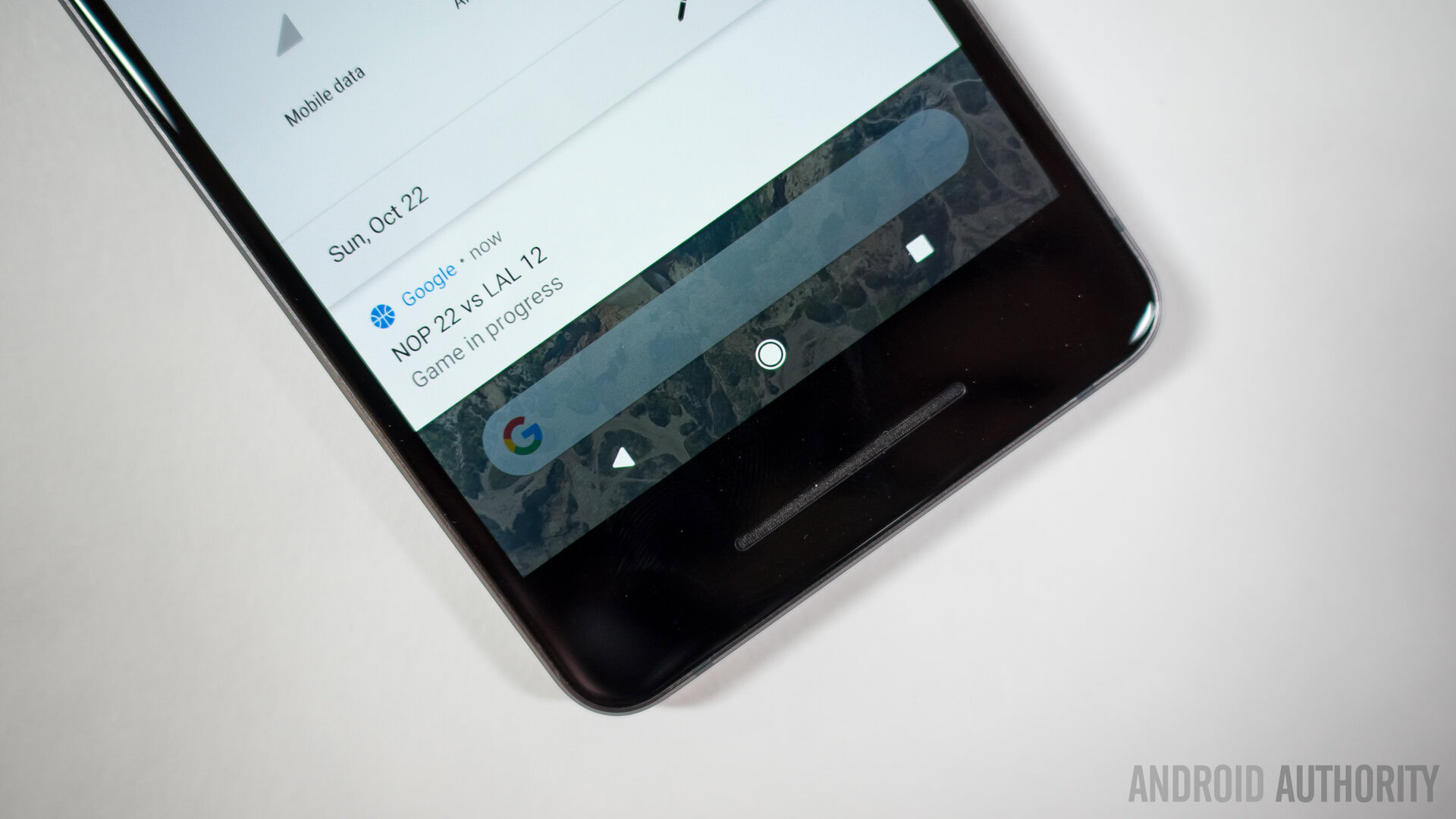
The Pixel 2 and Pixel 2 XL are also the first two phones to support eSIM, at least for Project Fi. This means both devices actually have embedded SIMs that never need to physically be removed. Instead, if you need to switch from one carrier to another, the eSIM will allow you to do just that, right from the phone. Well, it will allow that eventually. It’s still early days for eSIM technology, but in the future switching between carriers will be a breeze.
Under the hood, the Pixel 2 sports a non-removable 2,700 mAh battery, and the Pixel 2 XL has a much larger 3,520 mAh cell. During the announcement I was concerned at the Pixel 2’s battery size, but it hasn’t been a huge problem for me during my time with the phone. I’m consistently getting four hours of screen-on time with the device, though on heavier days I get a little less than that. It’s not the six hours of SoT that the Pixel XL gets, but it’s decent.
The Pixel 2 XL’s battery life has been consistent and reliable. While four hours of SoT is the norm for the smaller phone, Josh’s XL managed an additional hour. Five hours of screen-on time is practically what the phone strives for, hitting single digit percentages at the end of 12- to 15-hour work days depending on heavy usage. Thanks to the larger capacity, the Pixel 2 XL might be the phone that you want for longevity and constant productivity.
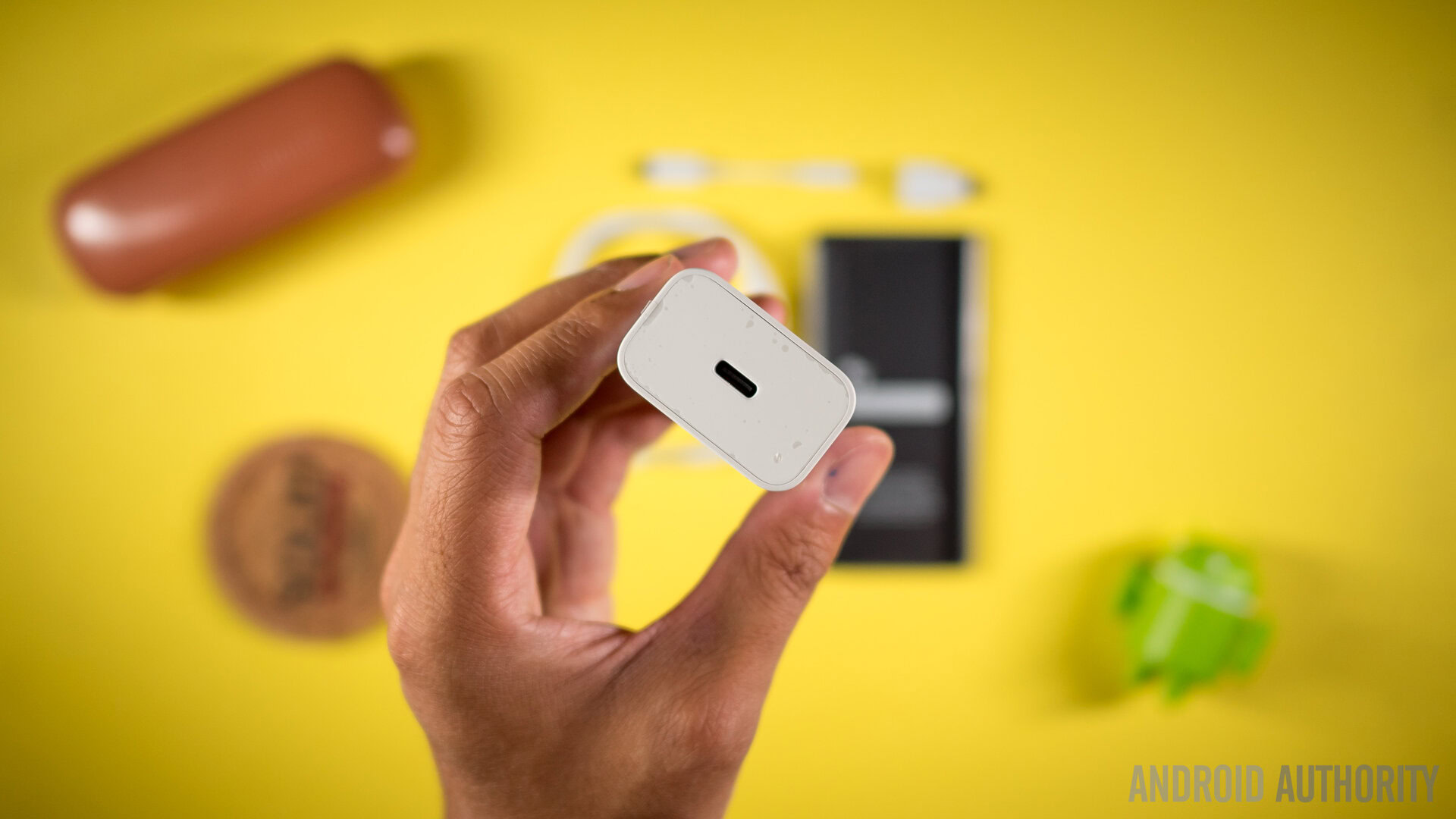
If your battery runs out, charging shouldn’t be much of an issue. While they both lack wireless charging, they are compatible with rapid charging as long as you’re using the included 18W charger. Quick Charge 3.0 can be used to get a quick boost or those users who have further adopted the USB Type-C standard can take advantage of capable Power Delivery chargers.
Camera

If the first-generation Pixels taught us anything, it’s that the days of laggy camera apps and blurry photos are long gone. Google flexed its camera muscles more so last year than it ever has, and things are even more impressive with the Pixel 2 and Pixel 2 XL.
Some of the biggest news to come out of the Pixel 2 unveiling was the fact that DxOMark gave the devices a score of 98, which surpasses the iPhone 8 Plus and Galaxy Note 8 by four points. Take those scores how you like— there are plenty of reasons not to use DxOMark as your definitive camera ranking system.
The proof is in the picture quality and the reliability of the camera app, and we’re happy to say that shooting with the Pixel 2 has been a blast.
No matter which size Pixel you choose, you get the same camera experience. Both devices come with a single 12.2 MP rear sensor with 1.4 μm pixels and an f/1.8 aperture. Even though dual-camera setups seem to be all the rage in 2017, Google is sticking to its guns and going the single sensor route. You might think that means the Pixels miss out on fun features like Portrait Mode, but you’d be wrong.
Google is using its Dual Pixel cameras to take the place of physical dual camera sensors. Those Dual Pixels take in as much depth data as they possibly can, while the phone bridges the gap in software processing. And the results are fantastic.
Portrait Mode shots taken with the Pixel 2 are right up there with the best, though it still has trouble neatly blurring around hair. We’re eager to spend some time with this mode over the next couple weeks and see how it really compares with the Note 8 and iPhone 8 Plus.
What’s perhaps even more impressive is the fact that Google also brought Portrait Mode to the front-facing 8 MP sensor. Naturally, due to the smaller f/2.4 aperture and step down in megapixel count, Portrait Mode shots aren’t going to be as nice-looking as the ones taken with the back, but they’re certainly good enough for sharing on social media. Selfies taken without Portrait Mode are just fine, too. Indeed, without the Portrait Mode even on, the front-facing camera of the Pixel 2 is one of the best performers we’ve seen thus far.
Photos taken with the Pixel 2 are stunning.
What if you don’t want to shoot in Portrait Mode? You’re in luck; photos taken with the Pixel 2 are stunning.
Shooting more general photos proved to be a snappy (pun-intended) experience due to the sheer speed of the camera app. Shutter to file speeds are as high as ever, which is impressive considering how the Pixels are essentially taking multiple photos at all times to apply its HDR+. Even in lower-light situations, the camera will not keep the shutter open for long to compensate for exposure— it just snaps and gets to work. There is a small slowdown in only the darkest situations, but such situations are impractical anyway and require flash.
The Pixel 2 is also the first device to come with Google’s first SoC, the Pixel Visual Core. This octa-core chipset is designed to assist with photo processing and is said to run HDR+ “5x faster” and use “less than 1/10th the energy” compared to typical application processors.
It’s worth noting however that neither the Pixel 2 nor Pixel 2 XL are using the chip yet. Google will enable it when the Android 8.1 developer preview arrives in a few weeks.
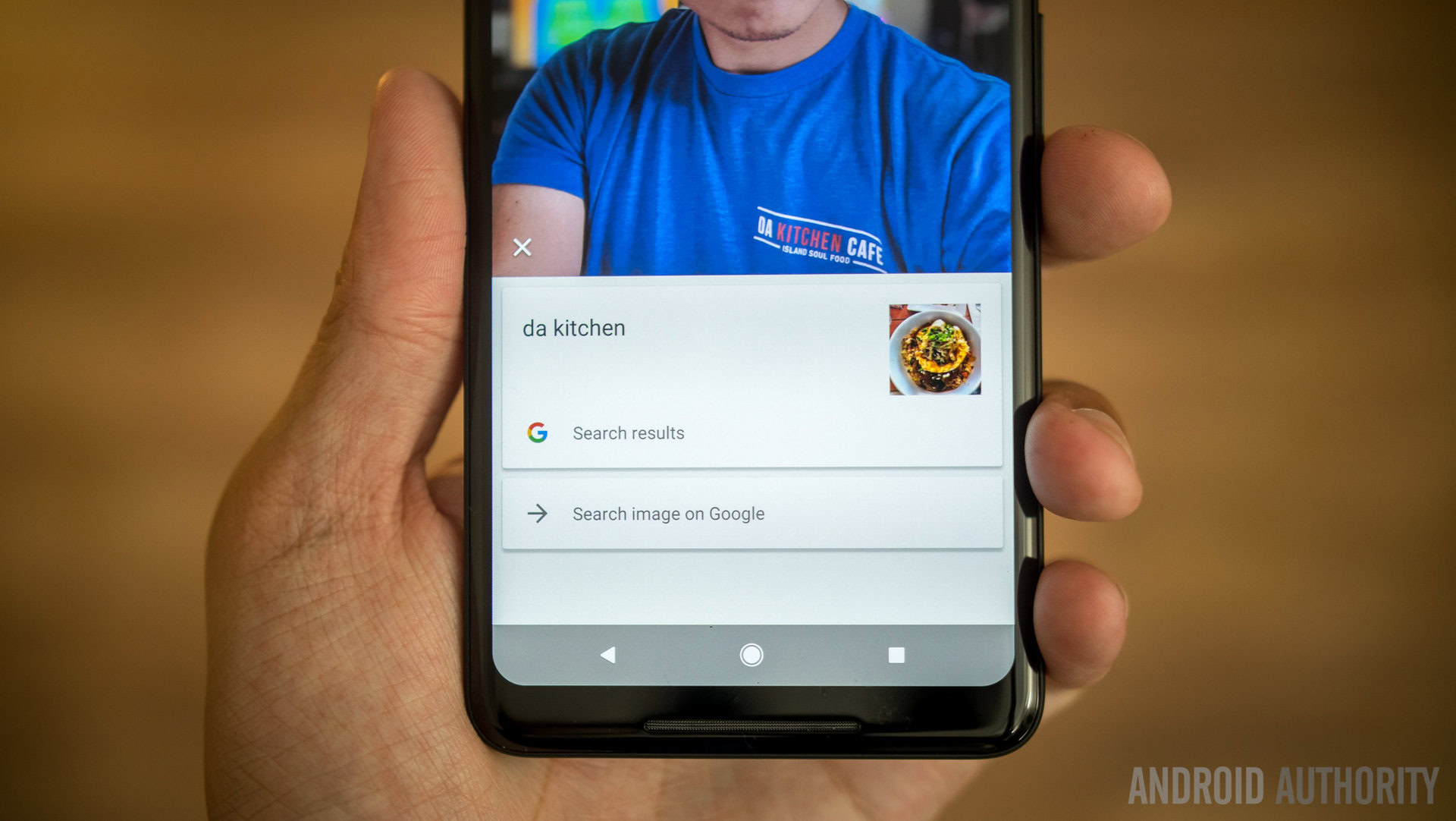
Google Lens is worth a mention, but keep in mind it isn’t available as a shooting mode just yet. For now, it is part of the Photos app as a way to do OCR and backwards photo searches. We’ve had some notable success with this version of Lens, especially when it can read text in a photo and generate a google search query. In other cases, Lens is only recognizing what object is in the frame, giving me ‘bottle’ as a query instead of trying to read the label on a bottle of wine I recently enjoyed. Lens will likely get better as time goes on and when it finally arrives on Assistant, so we will be reserving judgement until then.
Software
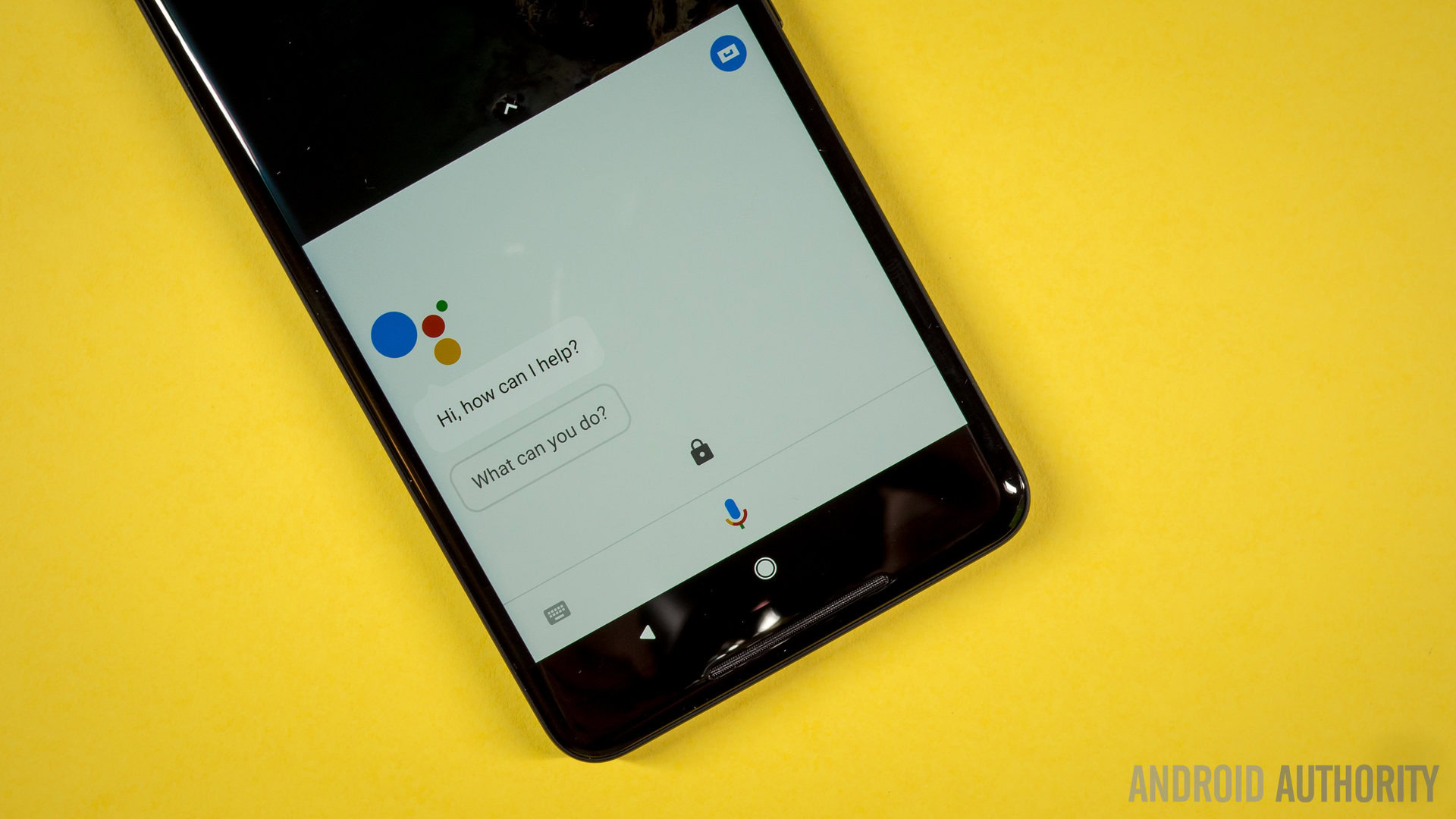
Google is taking an AI-first approach to the Pixel 2, and it’s doing so by putting Google Assistant everywhere you could possibly want. You can still long-press the home button to summon the Assistant, but now there’s another way to get to it from every screen: by squeezing.
Google is putting Assistant everywhere you could possibly want.
That’s right, the Pixel 2 and Pixel 2 XL have squeezable sides, similar to what HTCdid with its latest flagship, the U11. On the Pixels, the feature is called Active Edge and it does one thing and one thing only— open the Assistant. I wish you could program Active Edge to open any app (although there is an unofficial way), but having the Assistant just a squeeze away is actually pretty convenient. I loved using it on my U11, and I love using it on the Pixel.
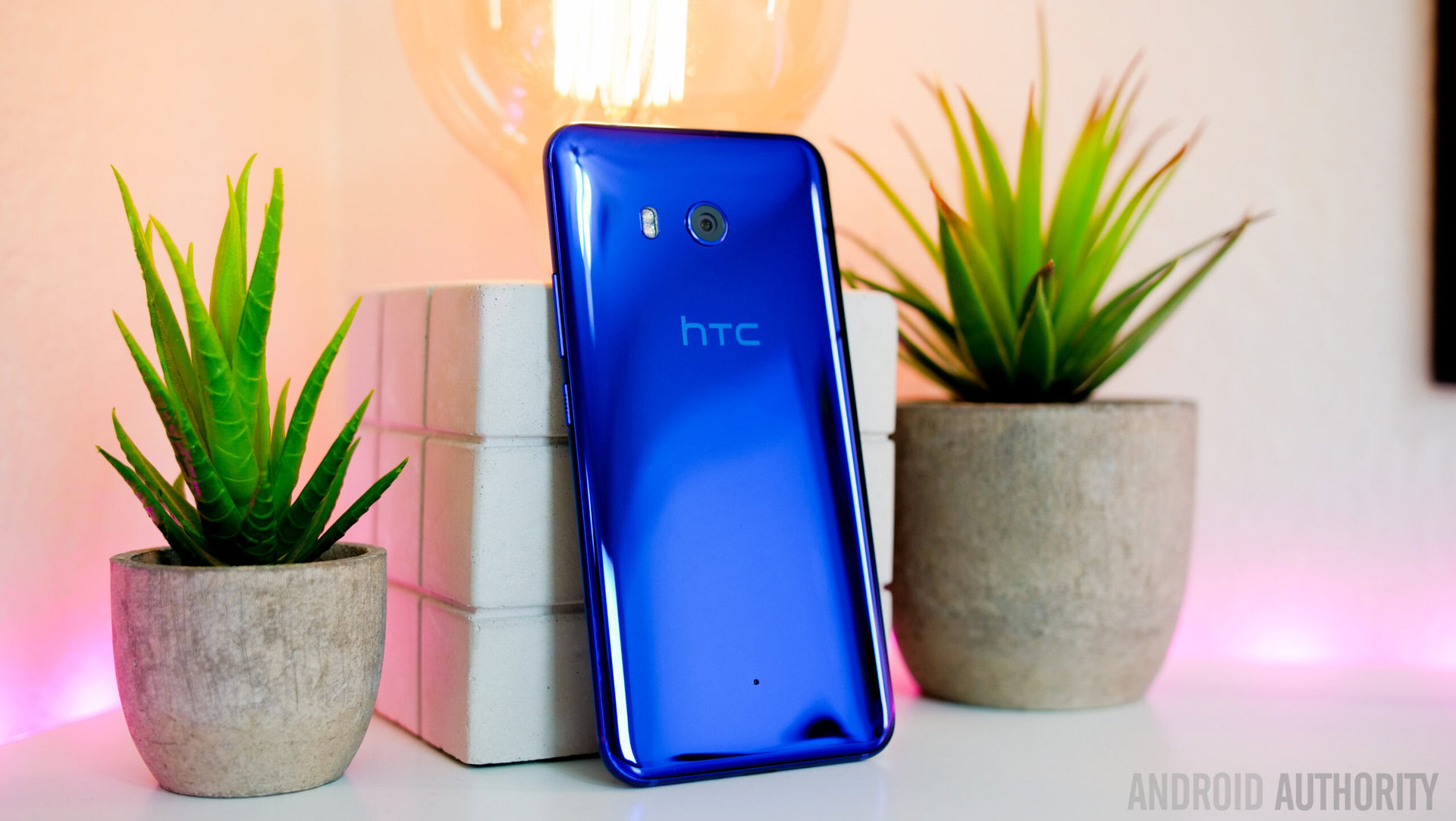
Now that Google Assistant is available on every Android phone, I’m not going to walk through every one of its features. But I do want to touch on the fact that it’s the most convenient and easy-to-use voice assistant I’ve ever used.
It does the easy things, like telling me the weather report or how to say “where is the bathroom?” in Mandarin. You can type to it if you don’t want to talk. It can play ambient sounds. It’s getting better at controlling things on your phone. It’s getting better and better every week.
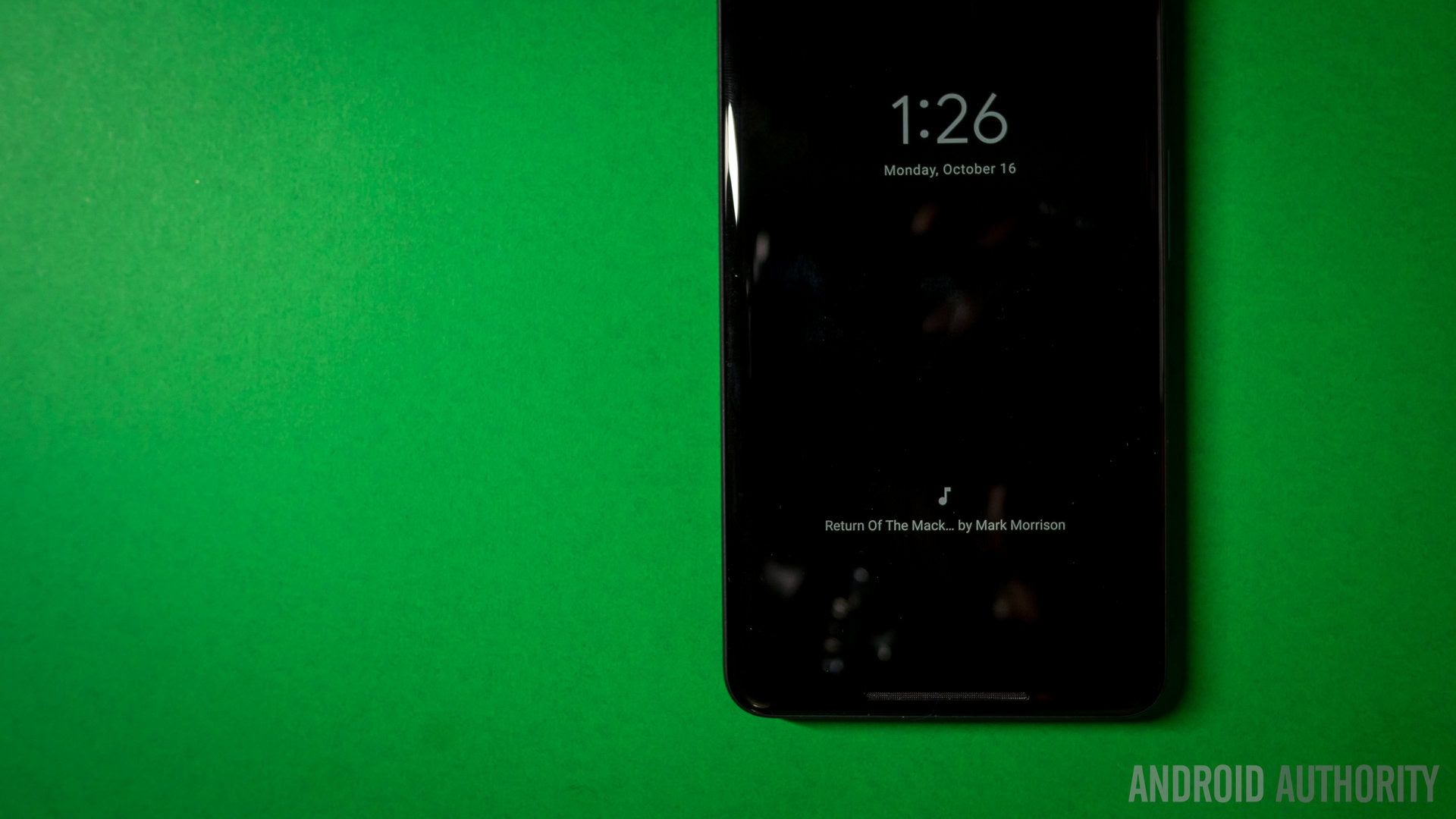
Google is also bringing one of its most useful features to the lock screen. The Google app (not Google Assistant, unfortunately) has been able to recognize songs that are playing nearby for some time, but this required you to ask, either by voice or by typing it out, “What song is this?” Now you can access that info right from the lock screen without asking.
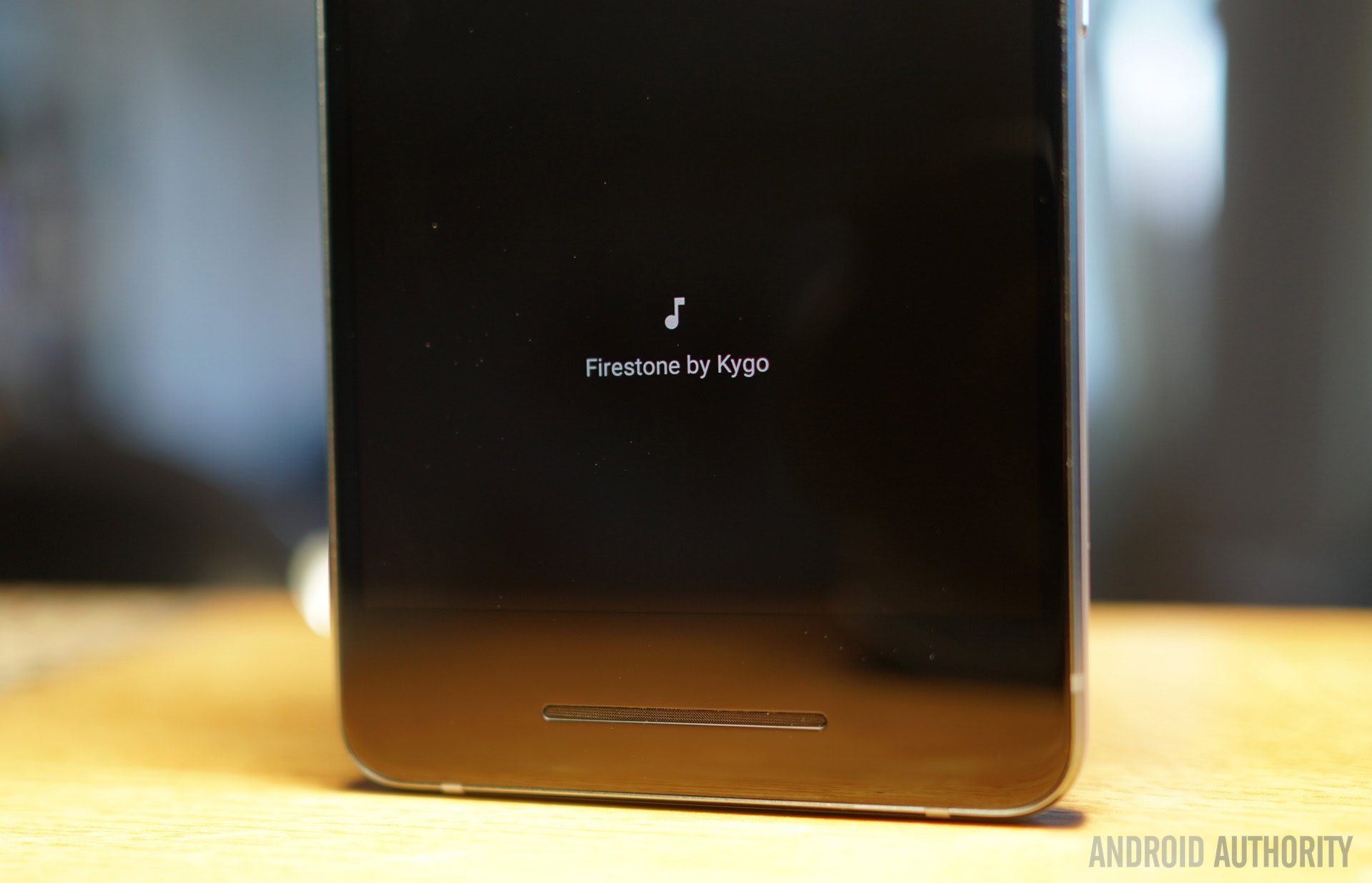
It works well, but it does have a more limited database of songs to pull from since it’s working offline. However, Google’s database of songs is region specific and receives automatic updates when your phone is connected to Wi-Fi.
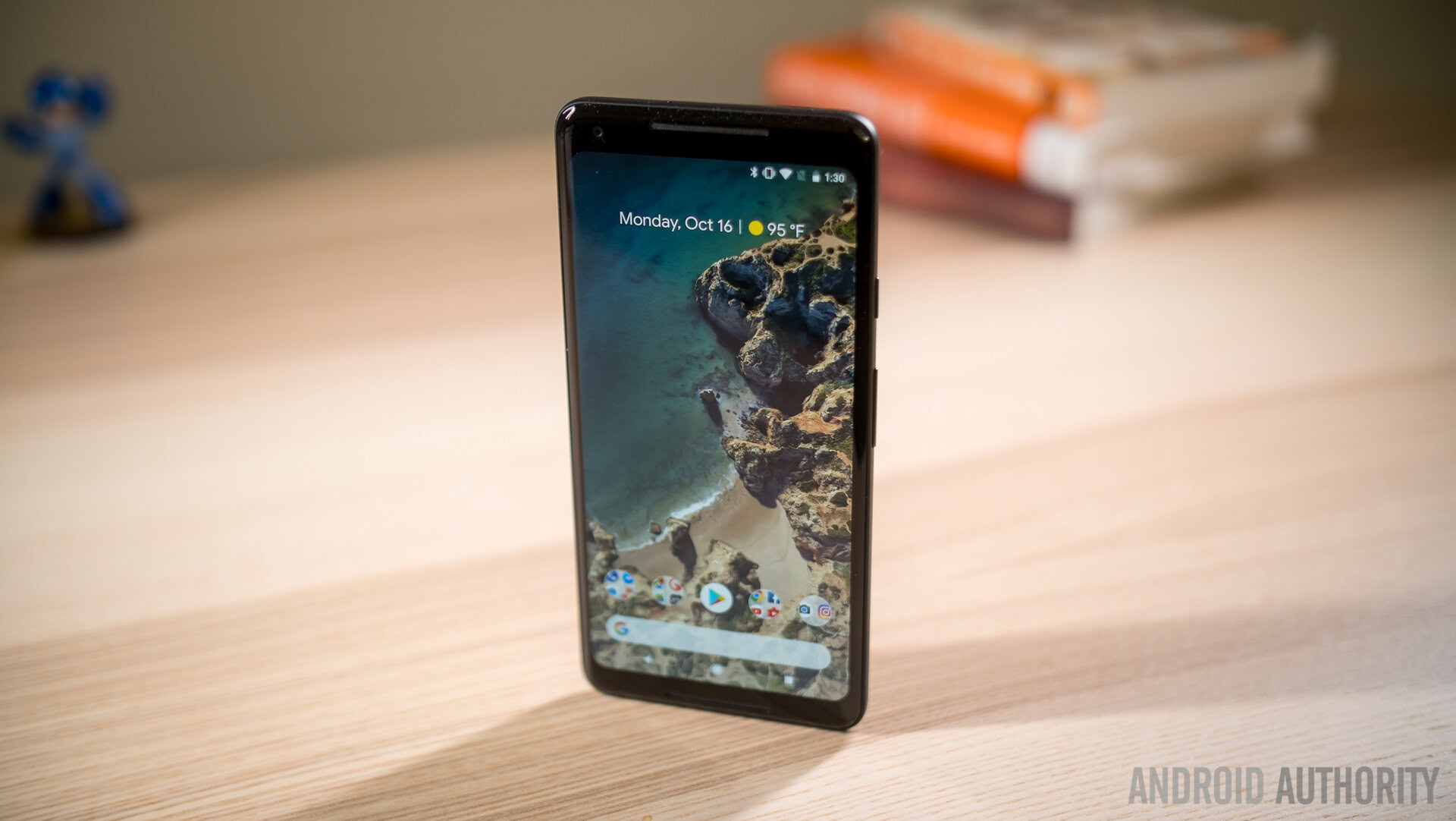
Once you unlock your phone for the first time, you’ll be greeted by a beautiful new live wallpaper of waves moving back and forth on a beach in Lagos. It’s part of Google’s new “Living universe” collection of wallpapers that are exclusive to the Pixel 2. There are a total of five Earth view wallpapers, four planet ones, and six “Your whirled” wallpapers that take local wind data and convert them into colorful moving images. The Earth view wallpapers are the best, though. Check out two of our favorites below.
Also new to the software experience is a redesigned Pixel Launcher, which now sees the Google Search bar move to the bottom of the screen, making it much easier to reach with your thumb. There’s also a static At A Glance widget on the home screen that gives you quick access to your upcoming calendar appointments and weather.
And finally (finally), Google has removed that “pill” widget that debuted on the first-generation Pixels. I feel like I’m the only one that didn’t like the look of it. It might have been the reminder that Google Feed (formerly Google Now) is sitting to the left of the home screen, ready to be accessed. But this time around, just be sure to remember it’s there and enjoy the fact that the small pill-like tab is gone. The Pixel 2 Launcher is ultimately cleaner and we are happy with the way it looks and performs.
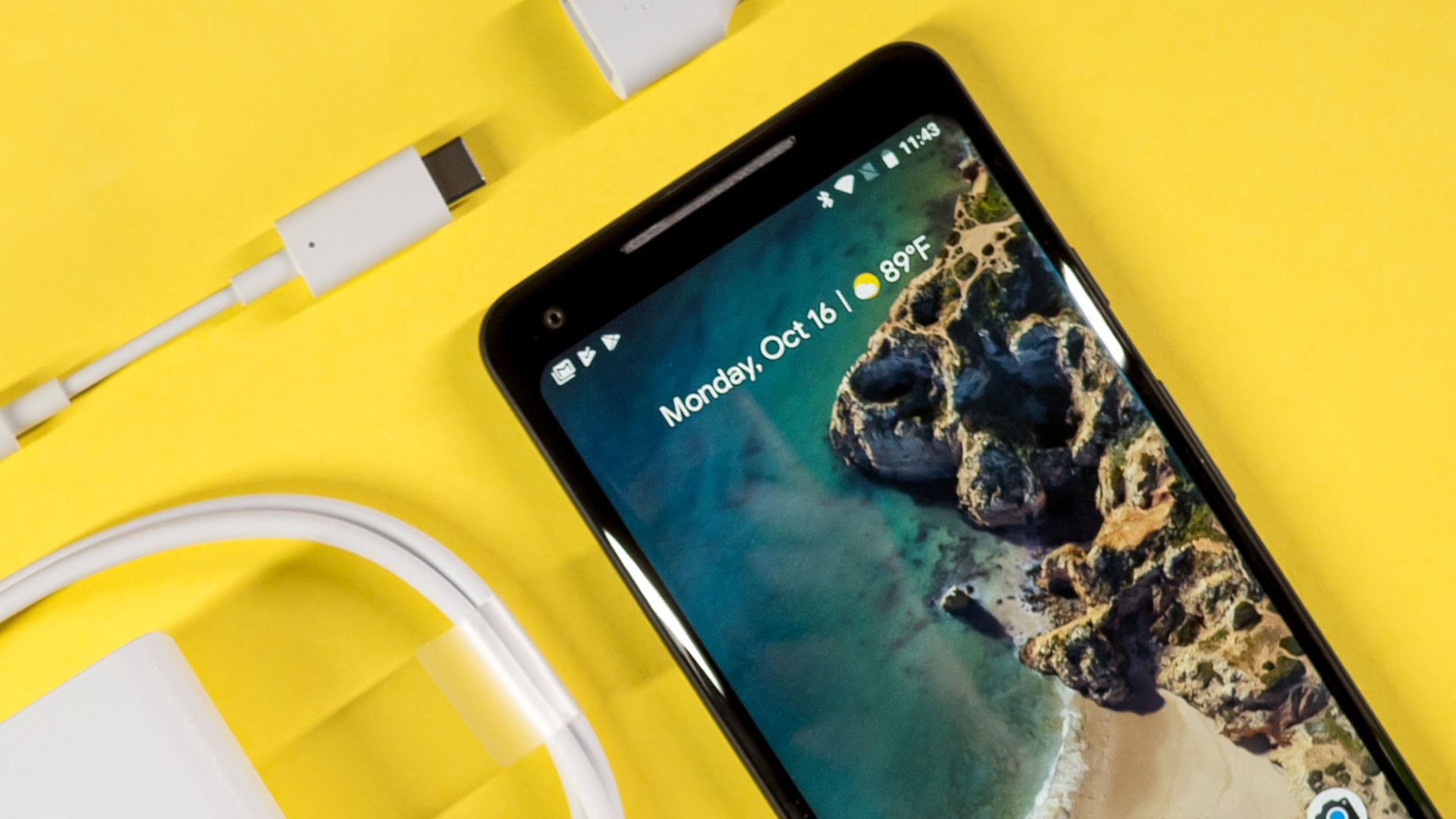
It’s no surprise that the Pixel 2 has one of the best Android experiences out there, if not the best.
Google has always excelled in the software department, so it’s no surprise that the Pixel 2 has one of the best Android experiences out there, if not the best. There are just so many little tweaks to the software that really make this experience stand out above all other Android phones. For instance, the Pixel Launcher will switch to an automatic dark theme if you have a dark wallpaper. Also, most Android phones’ screens are activated when you plug them in or unplug them, but the Pixel 2’s screen stays off. It just adds a little charging icon to the always-on display. It’s the little things.
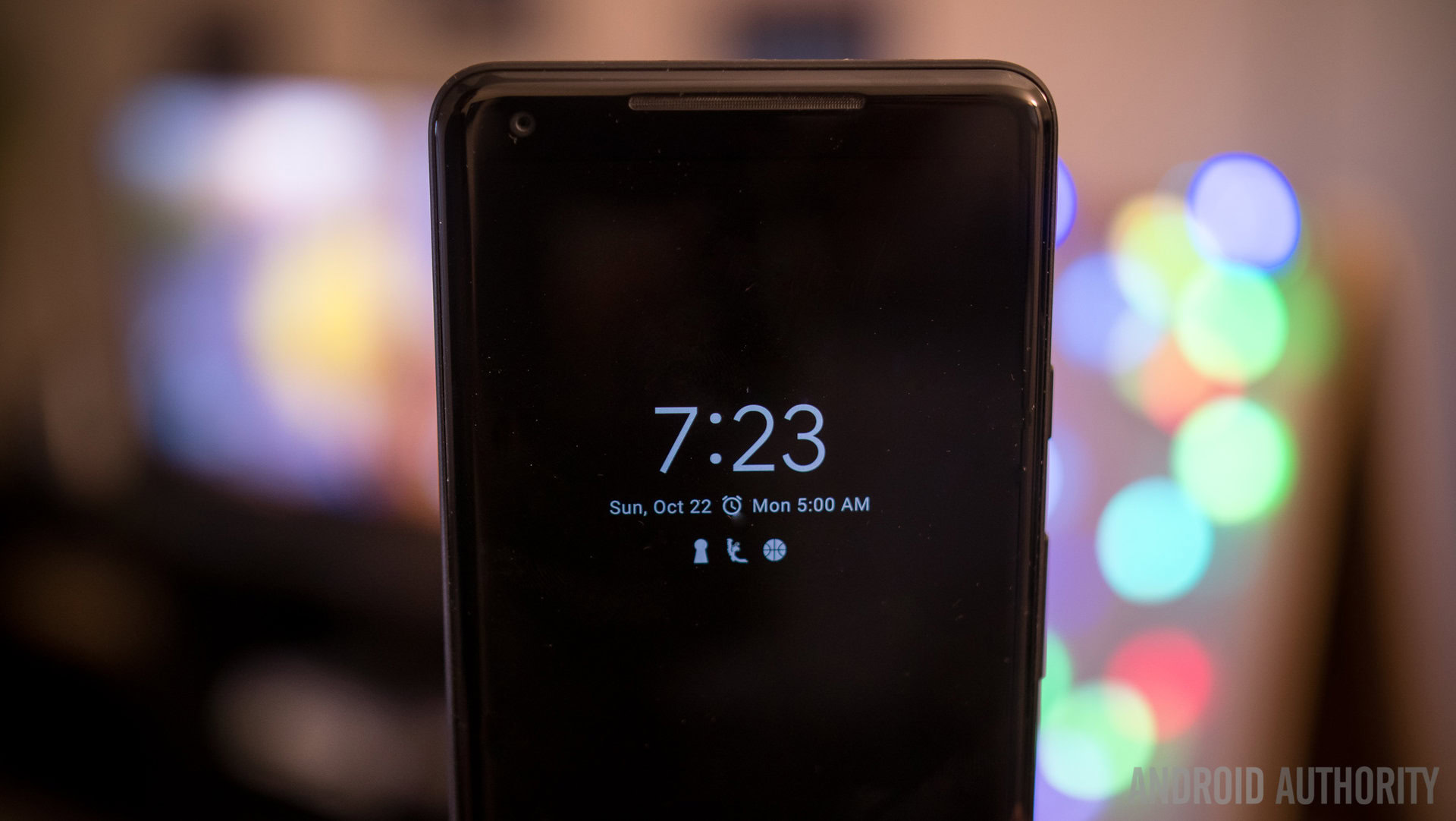
Speaking of the always-on display, there is one, though it’s not all that customizable. It shows just the time, date, an alarm icon, and if you have any unread notifications. We would have loved to see some customization in the AoD, like adding graphics and personal images like on the V30 and Note 8. Maybe this will be a feature sometime in the future. For now we have a simple edition of the always-on display to utilize.
What makes the overall experience that much more enjoyable is the new version of Android that’s running on the Pixel 2. Android 8.0 Oreo is here and, in case you haven’t read our full review yet (spoiler alert), it’s wonderful.
See also: Android 8.0 review: Oreo is for everyone
The Oreo experience you’ve already seen on last year’s Pixels is about the same as what you get with the Pixel 2, so again, I won’t go into too much detail here. However, I’d be remiss not to mention some of my favorite Oreo features on the Pixel 2.
- Picture-in-Picture mode works flawlessly with apps like Google Maps and YouTube.
- Adaptive media control notifications are pretty and nobody can tell me otherwise.
- I’m already used to the light theme for the quick settings menu, and I don’t think I can go back.
Oh, and one other tidbit before we wrap things up: Google has promised that the Pixel 2 and Pixel 2 XL will receive three full years of OS platform updates— not just security patches. That means these devices will see Android P, Android Q, and Android R updates, provided their batteries are able to hold up that long. That’s a huge selling point, especially compared to other handsets on the market which only see two years of OS updates.
Specifications
| Google Pixel 2 | Google Pixel 2 XL | |
|---|---|---|
Display | Google Pixel 2 5.0-inch Full HD OLED 1,920 x 1,080 resolution 441 ppi Corning Gorilla Glass 5 16:9 aspect ratio | Google Pixel 2 XL 6.0-inch Quad HD+ pOLED 2,880 x 1,440 resolution 538 ppi Corning Gorilla Glass 5 18:9 aspect ratio |
Processor | Google Pixel 2 Octa-core Qualcomm Snapdragon 835 Mobile Platform 2.35 Ghz + 1.9 Ghz, 64-bit | Google Pixel 2 XL Octa-core Qualcomm Snapdragon 835 Mobile Platform 2.35 Ghz + 1.9 Ghz, 64-bit |
GPU | Google Pixel 2 Adreno 540 | Google Pixel 2 XL Adreno 540 |
RAM | Google Pixel 2 4 GB LPDDR4x | Google Pixel 2 XL 4 GB LPDDR4x |
Storage | Google Pixel 2 64/128 GB No microSD slot | Google Pixel 2 XL 64/128 GB No microSD slot |
Cameras | Google Pixel 2 Rear camera: 12.2 MP sensor, 1.4 μm pixel size, and f/1.8 aperture, laser + dual pixel phase detection autofocus, OIS, EIS Front camera: 8 MP sensor, 1.4 μm pixel size, and f/2.4 aperture, fixed focus | Google Pixel 2 XL Rear camera: 12.2 MP sensor, 1.4 μm pixel size, and f/1.8 aperture, laser + dual pixel phase detection autofocus, OIS, EIS Front camera: 8 MP sensor, 1.4 μm pixel size, and f/2.4 aperture, fixed focus |
Audio | Google Pixel 2 No 3.5 mm headphone jack Audio over USB Type-C | Google Pixel 2 XL No 3.5 mm headphone jack Audio over USB Type-C |
Battery | Google Pixel 2 2,700 mAh Non-removable Rapid Charging 18W | Google Pixel 2 XL 3,520 mAh Non-removable Rapid Charging 18W |
IP rating | Google Pixel 2 IP67 water and dust resistance | Google Pixel 2 XL IP67 water and dust resistance |
Network | Google Pixel 2 GSM/EDGE: Quad-band (850, 900, 1800, 1900 MHz) UMTS/HSPA+/HSDPA: Bands 1/2/4/5/8 CDMA EVDO Rev A: BC0/BC1/BC10 FDD-LTE : Bands 1*/2*/3*/4*/5/7*/8/12/13/17/20/25/26/28/29/30/32/66*2 TD-LTE: Bands 38*/40/412 Supports up to CAT 15 (800Mbps DL / 75Mbps UL), 3x DL CA, 4x4 MIMO, 256-QAM DL and 64-QAM UL depending on carrier support | Google Pixel 2 XL GSM/EDGE: Quad-band (850, 900, 1800, 1900 MHz) UMTS/HSPA+/HSDPA: Bands 1/2/4/5/8 CDMA EVDO Rev A: BC0/BC1/BC10 FDD-LTE : Bands 1*/2*/3*/4*/5/7*/8/12/13/17/20/25/26/28/29/30/32/66*2 TD-LTE: Bands 38*/40/412 Supports up to CAT 15 (800Mbps DL / 75Mbps UL), 3x DL CA, 4x4 MIMO, 256-QAM DL and 64-QAM UL depending on carrier support |
Connectivity | Google Pixel 2 Wi-Fi 802.11 a, b, g, n, ac Bluetooth 5.0 BLE NFC USB Type-C 2.0 (3.1 compatible) | Google Pixel 2 XL Wi-Fi 802.11 a, b, g, n, ac Bluetooth 5.0 BLE NFC USB Type-C 2.0 (3.1 compatible) |
SIM | Google Pixel 2 e-SIM | Google Pixel 2 XL e-SIM |
Software | Google Pixel 2 Android 8.0 Oreo | Google Pixel 2 XL Android 8.0 Oreo |
Colors | Google Pixel 2 Just Black, Clearly White, Kinda Blue | Google Pixel 2 XL Just Black, Black & White |
Dimensions and weight | Google Pixel 2 145.7 x 69.7 x 7.8 mm 143 grams | Google Pixel 2 XL 157.9 x 76.7 x 7.9 mm 175 grams |
Gallery
Pricing and availability
If you’re thinking about purchasing either device, you’re going to have to shell out a good amount of cash. The Pixel 2 is going for $649 for the 64 GB model, while the 128 GB model is selling for $749 at the Google Store. The Pixel 2 XL is $200 more expensive, putting it at $849 and $949 for the 64 and 128 GB variants, respectively.
If you aren’t able to buy these phones outright, the Google Store offers financing options as well as a new trade-in program that could save you almost $400.
Of course, you can also walk into your local Verizon store and pick one up. Verizon is yet again the exclusive carrier partner for the Pixel 2, so odds are the phones won’t make their way to T-Mobile, Sprint, or AT&T any time soon.
Conclusion
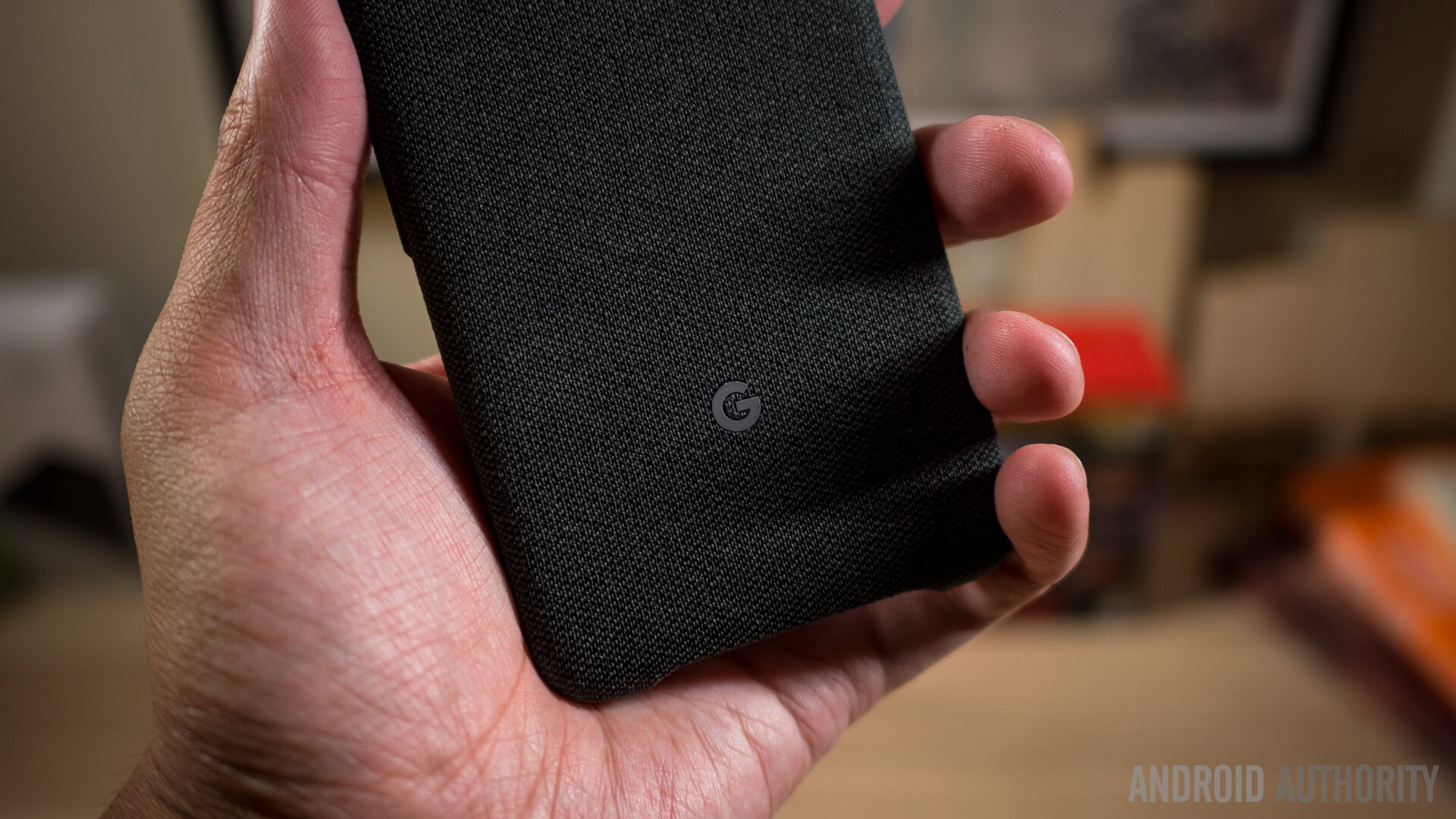
In case you skipped right to the conclusion, here’s what you need to know. There aren’t a ton of things that separate the Pixel 2 from the Pixel 2 XL, so the model you choose will most likely depend on whether you want a big or small screen. Just know that if you choose the bigger Pixel 2 XL, you may be a tad disappointed by the display. I think it’s totally fine, but you may not.
With every year it’s becoming more and more clear that you don’t buy a Pixel for its revolutionary hardware or industry-leading design. You buy the Pixel for the stellar software; for three years of OS updates; for the little tweaks that make using an Android phone truly enjoyable.
You should absolutely buy one— you won’t regret it.
In the case of the Pixel 2 and Pixel 2 XL, Google brought its wonderful software experience to good hardware, which makes for a great pair of Android phones. You should absolutely buy one— you won’t regret it.